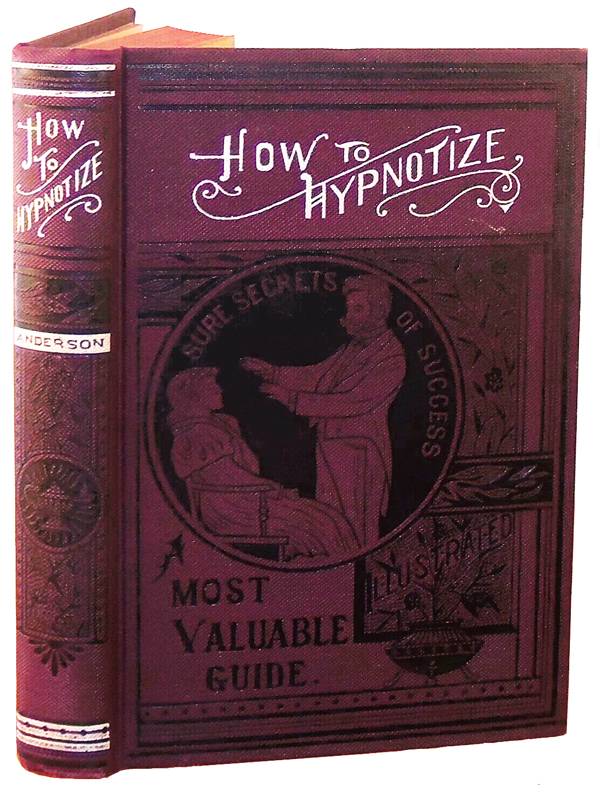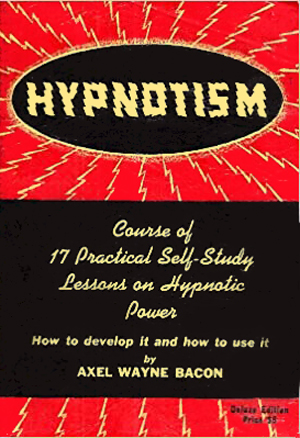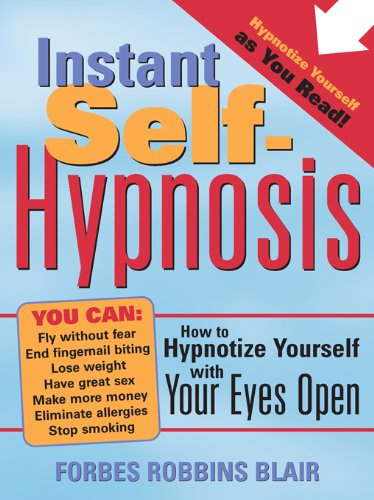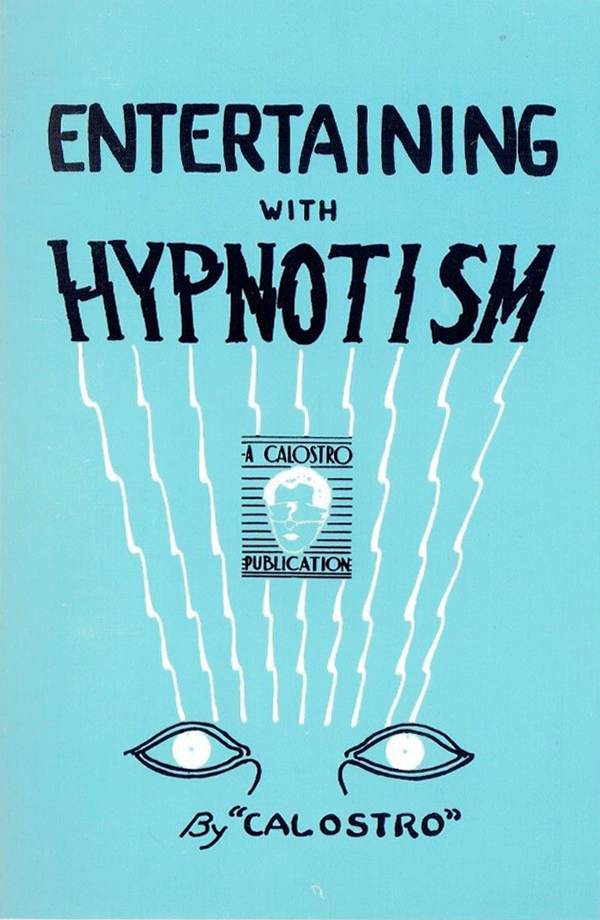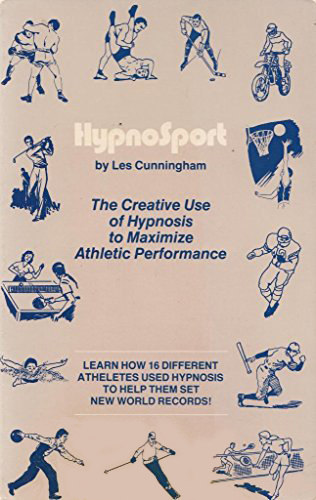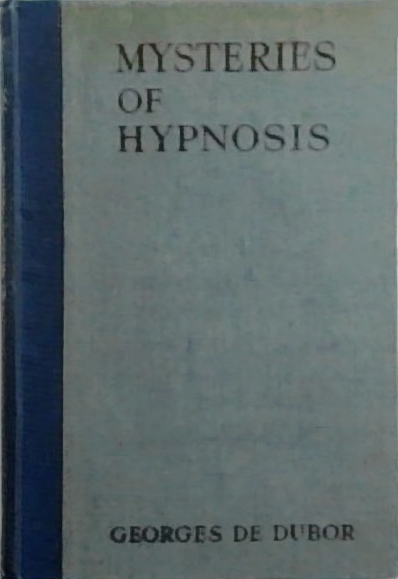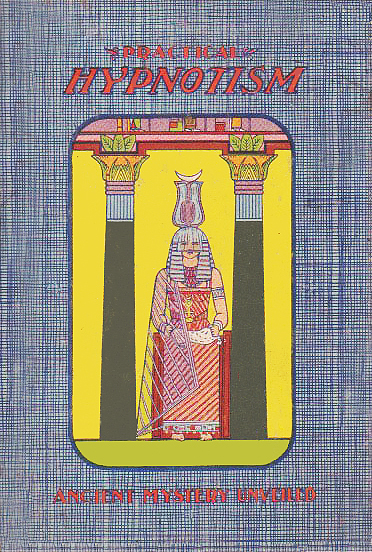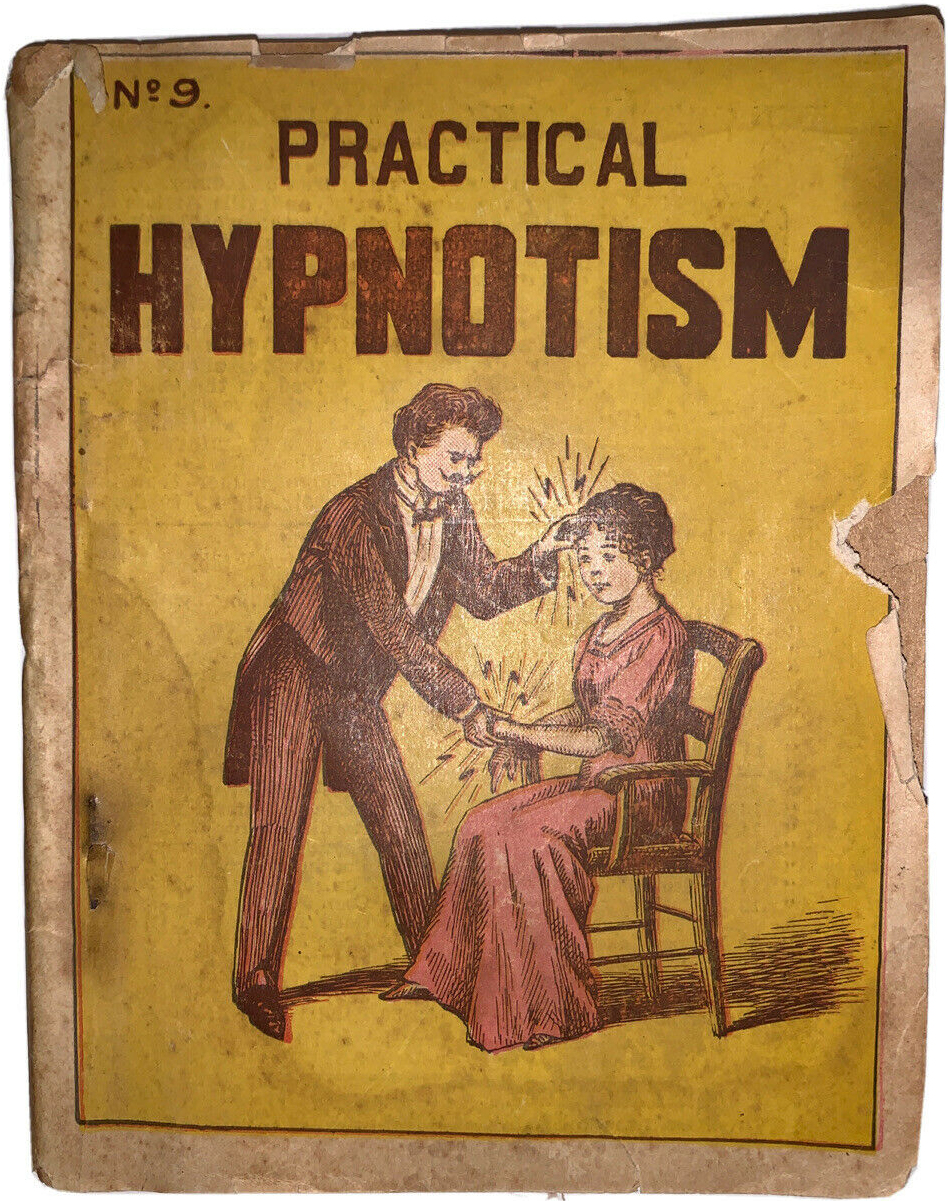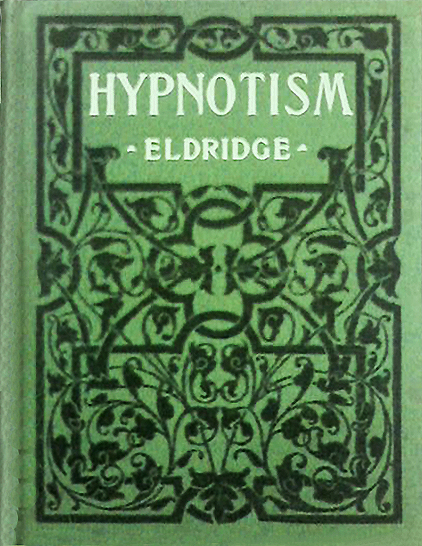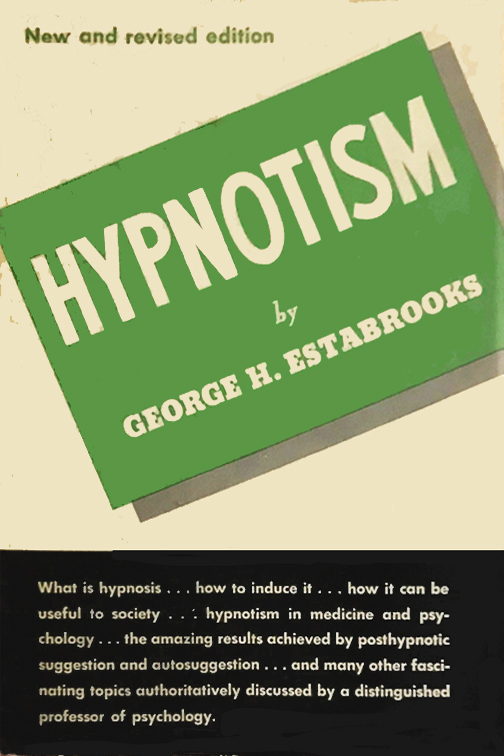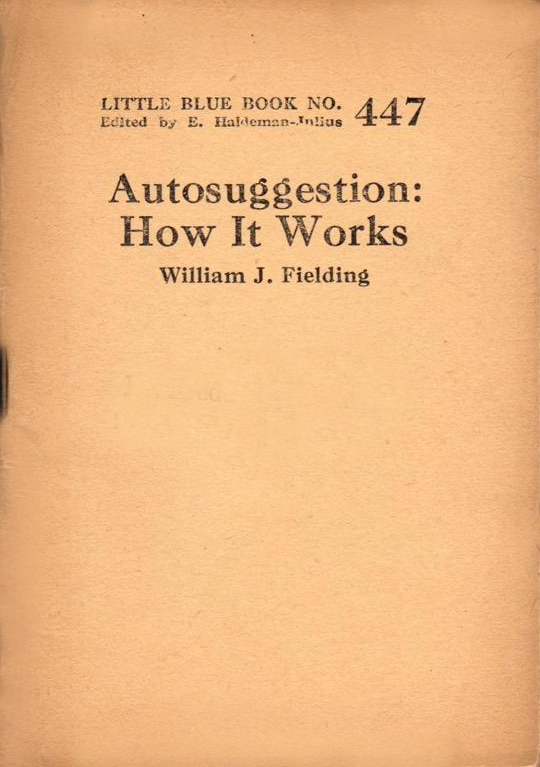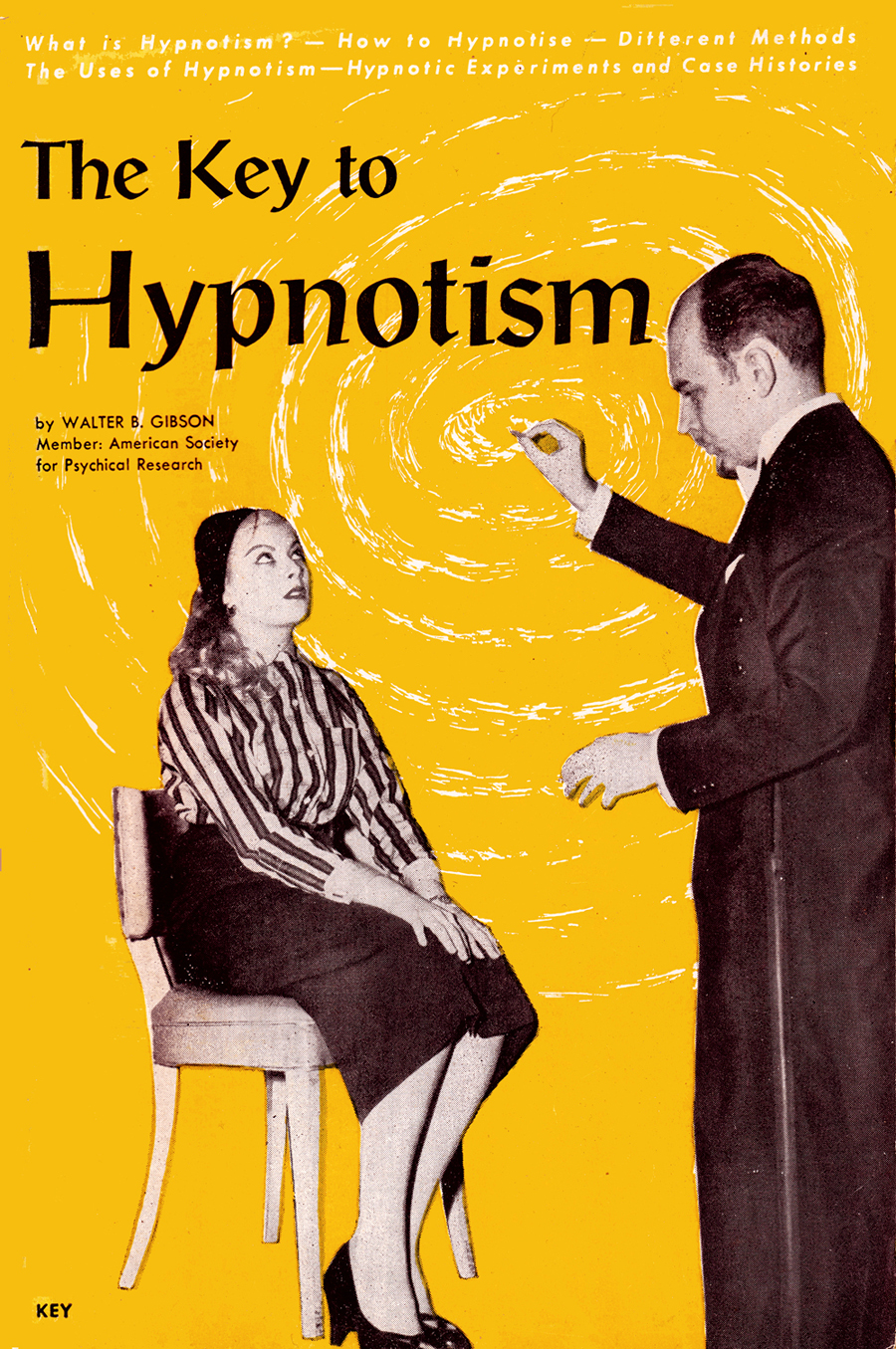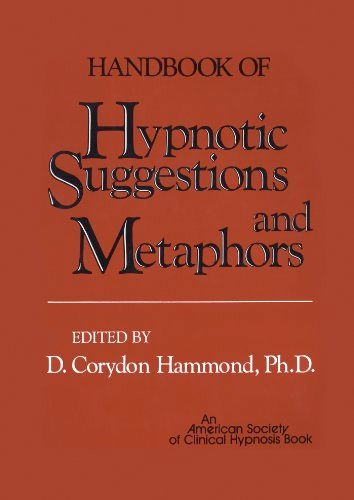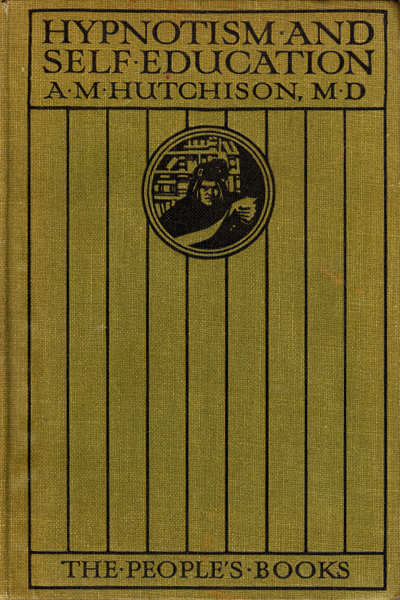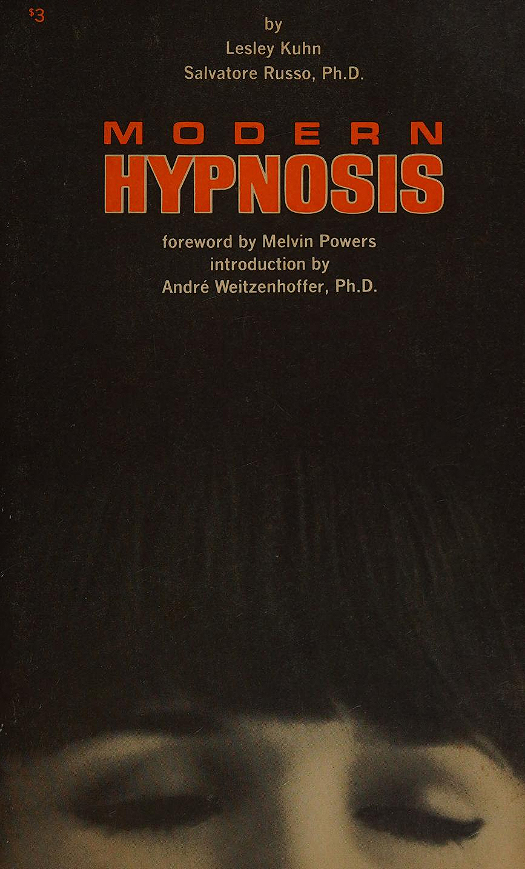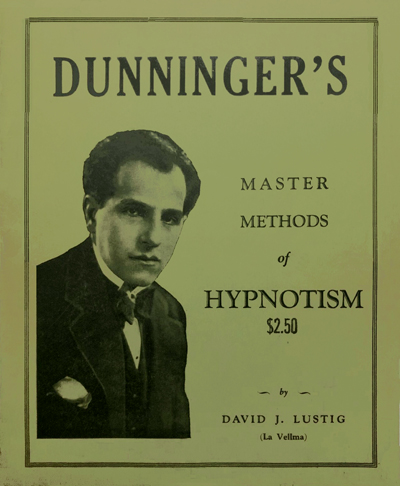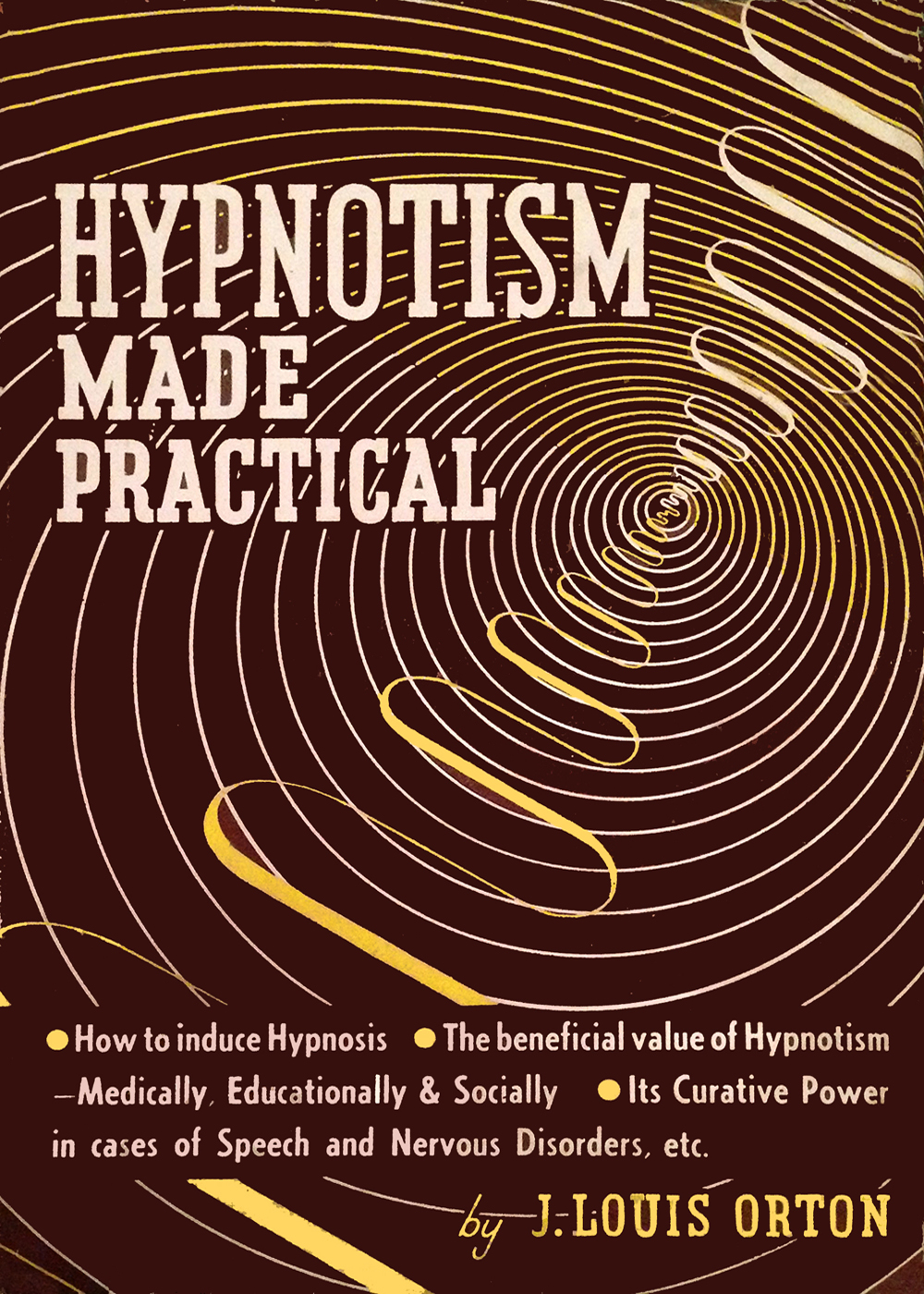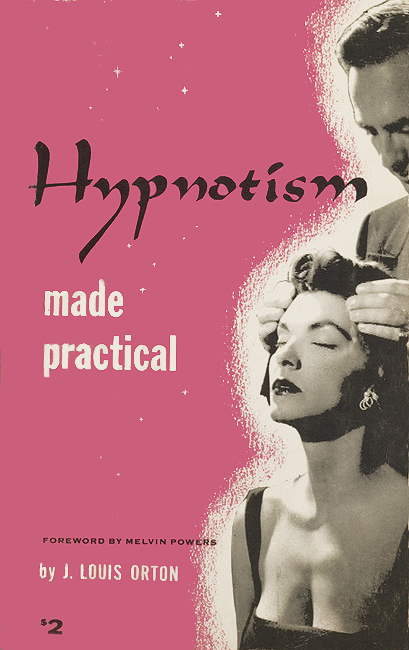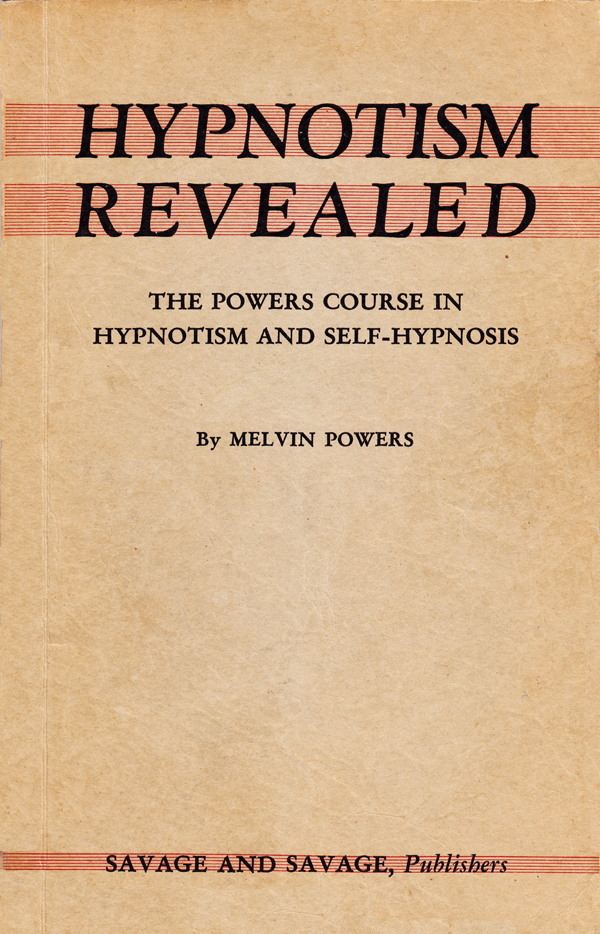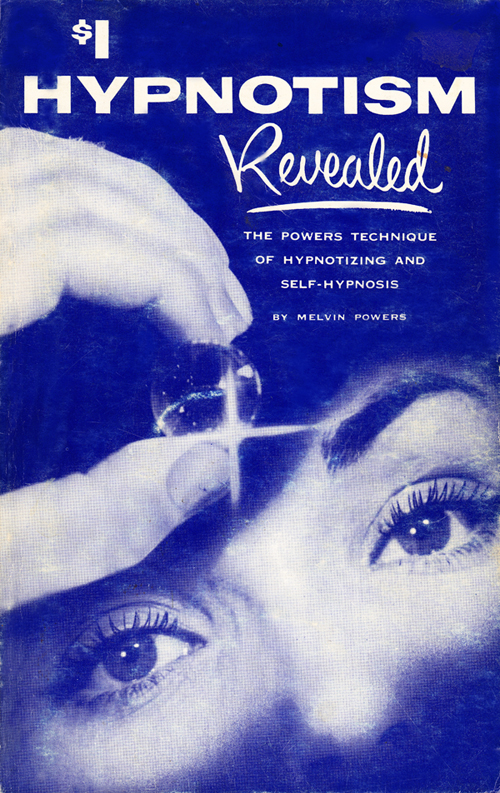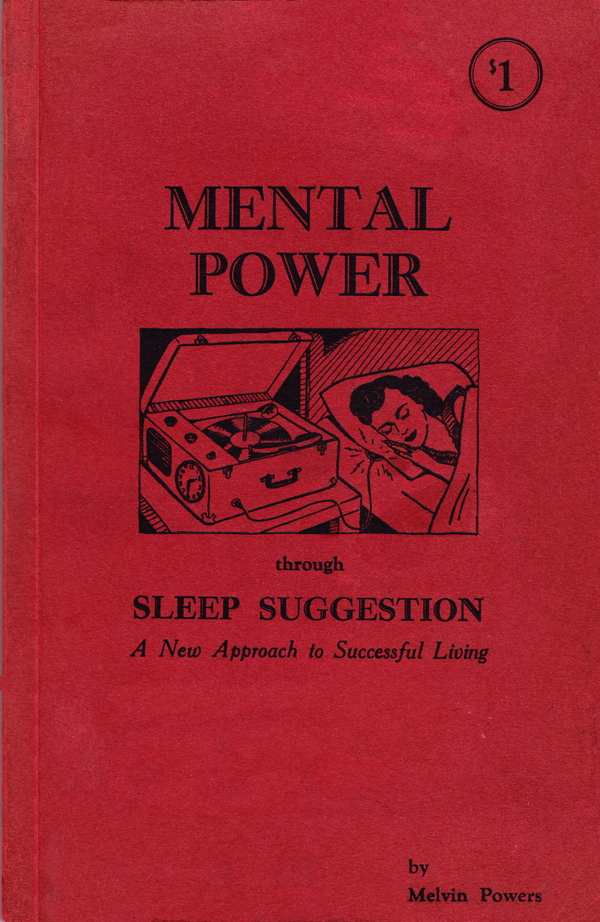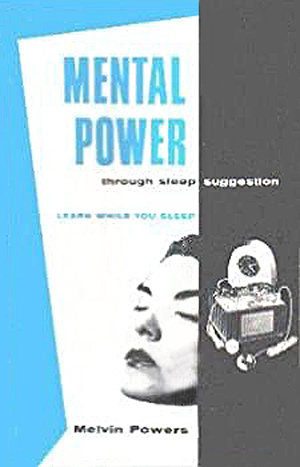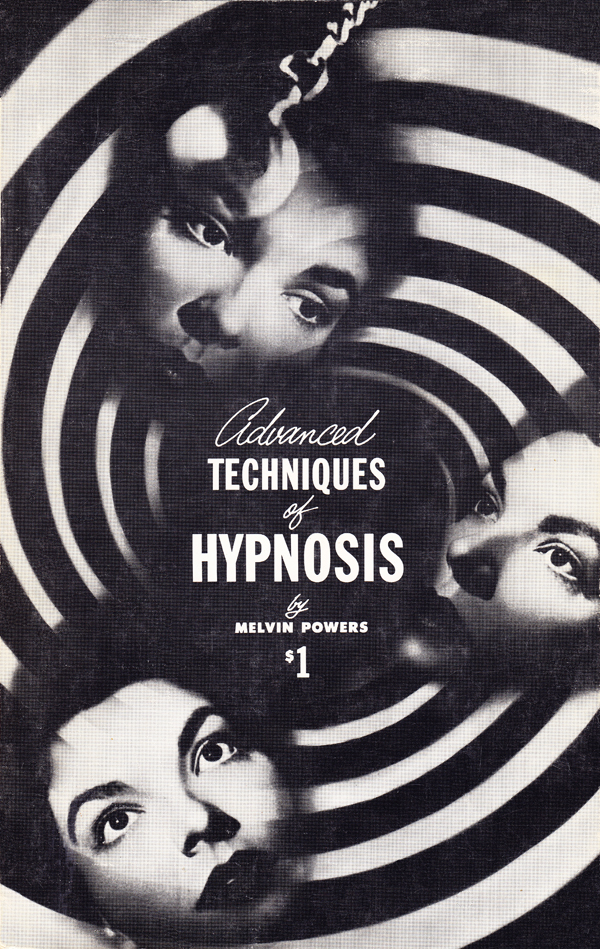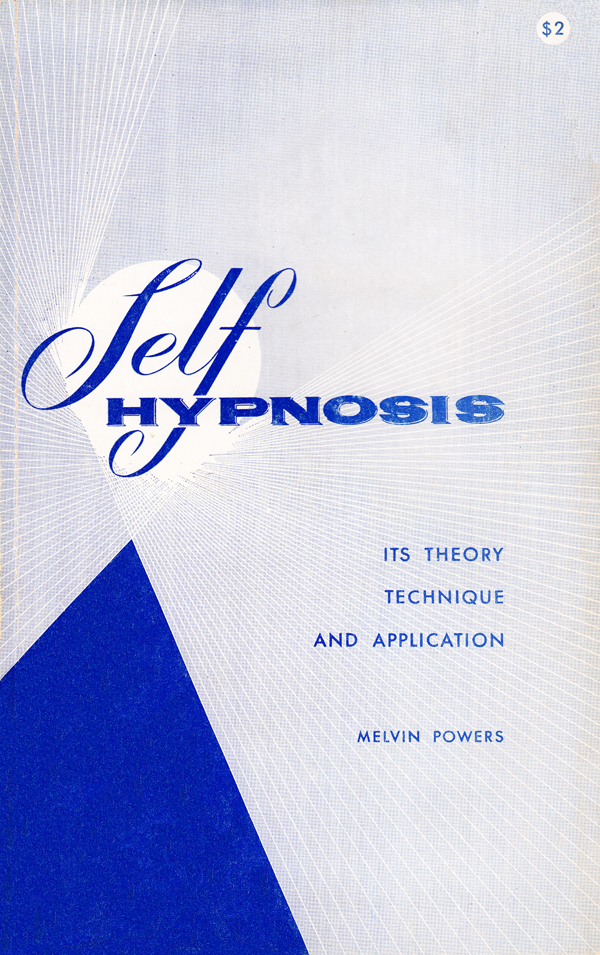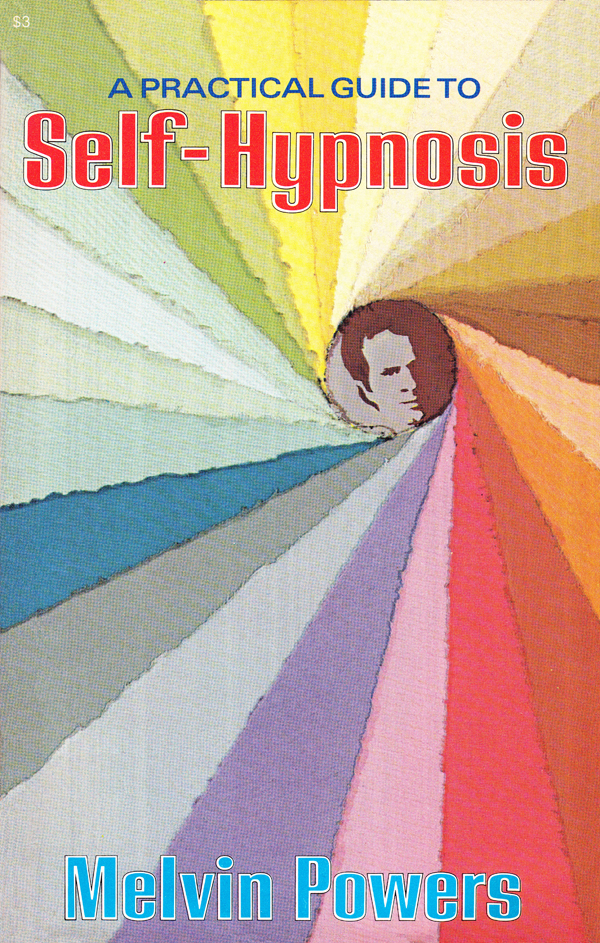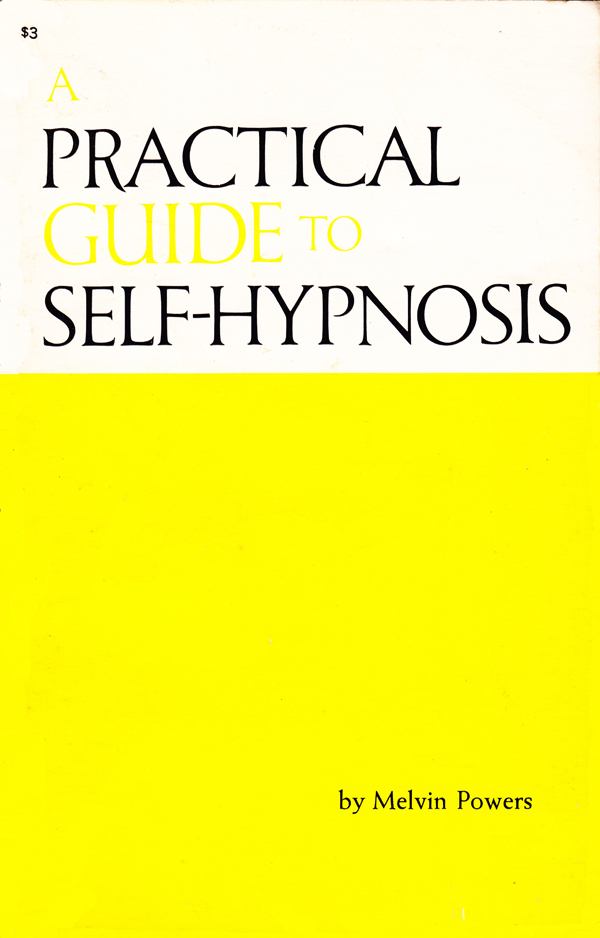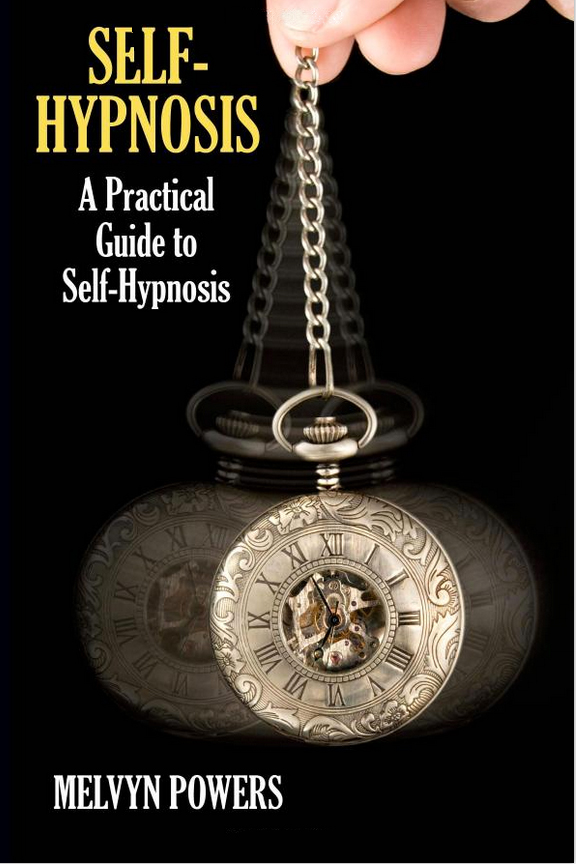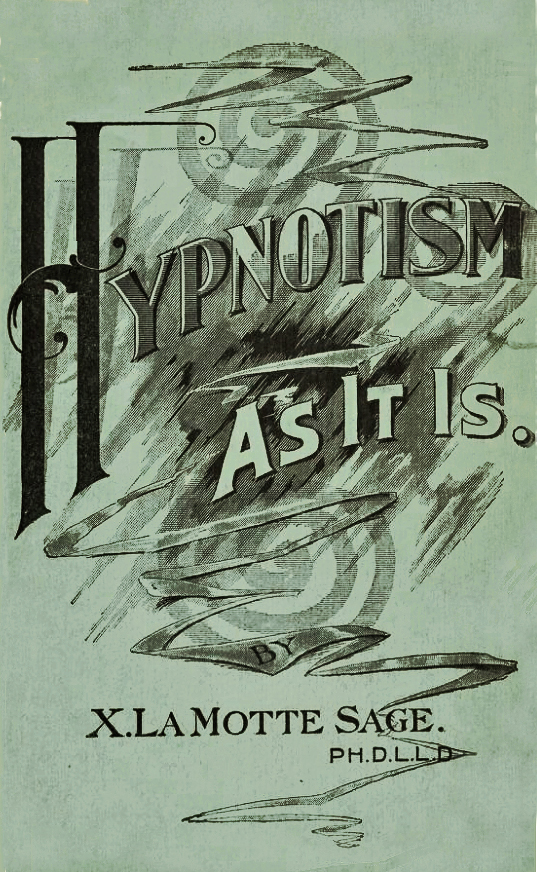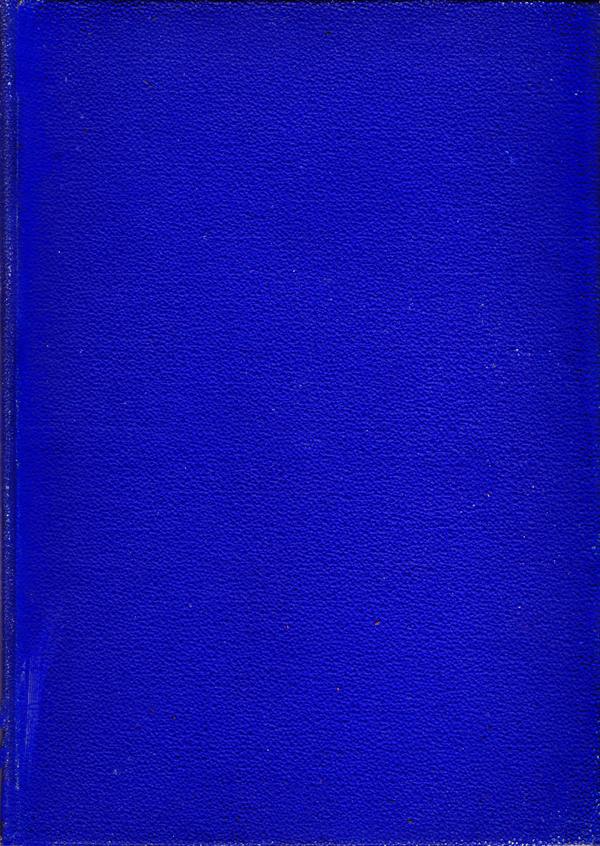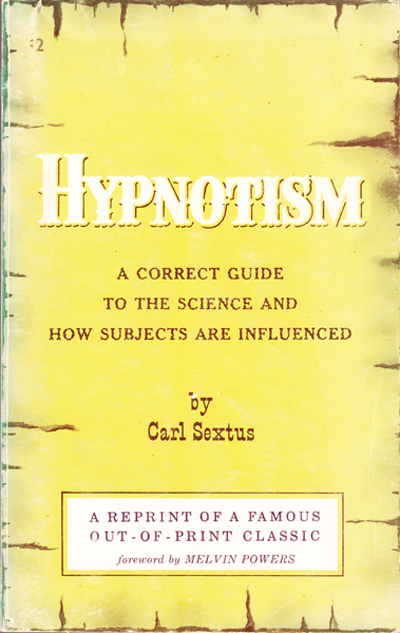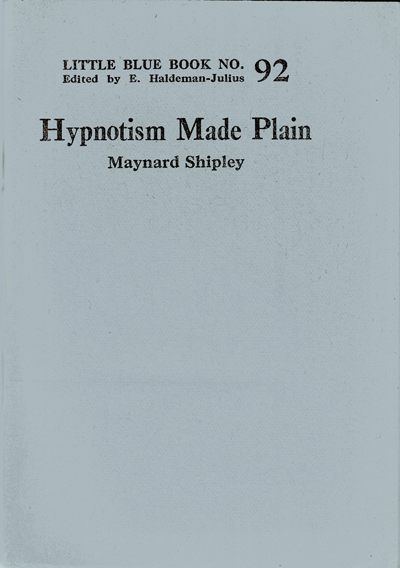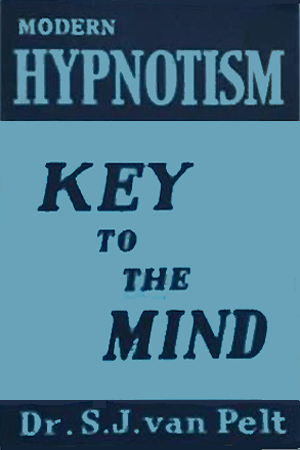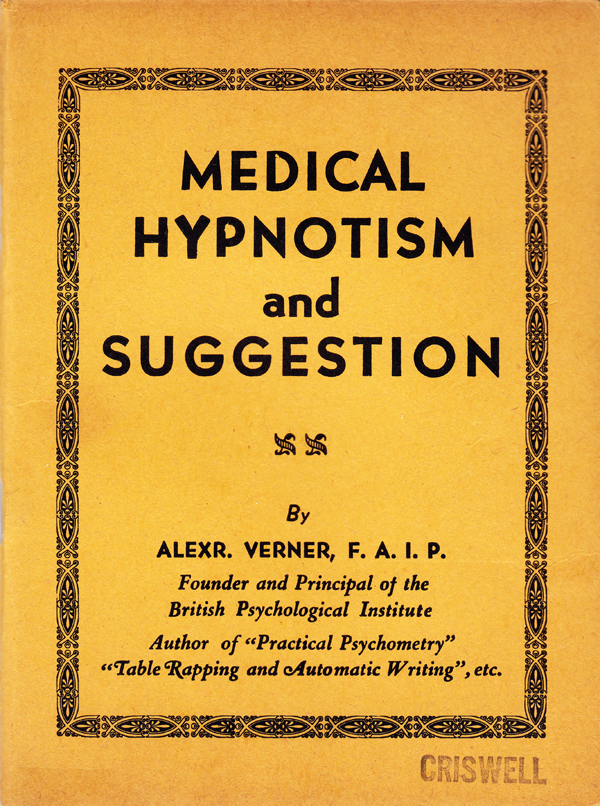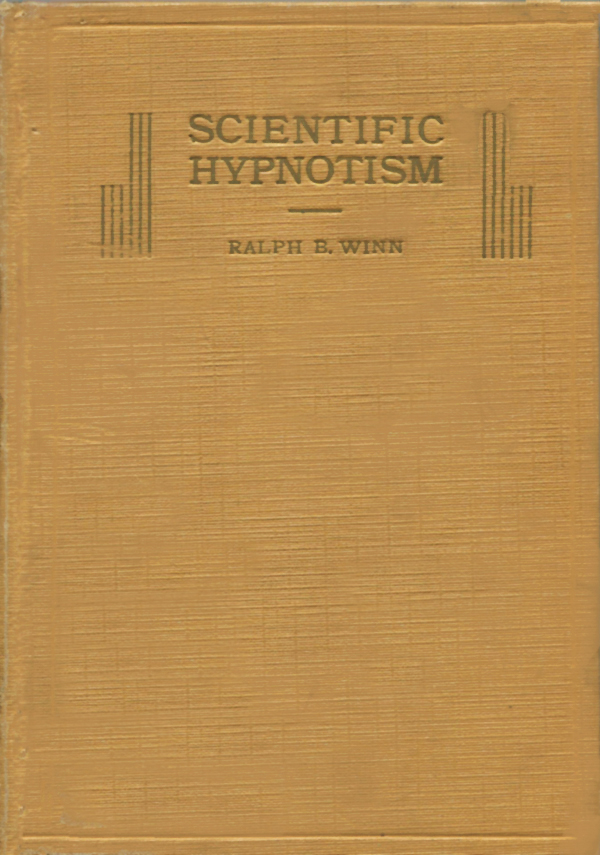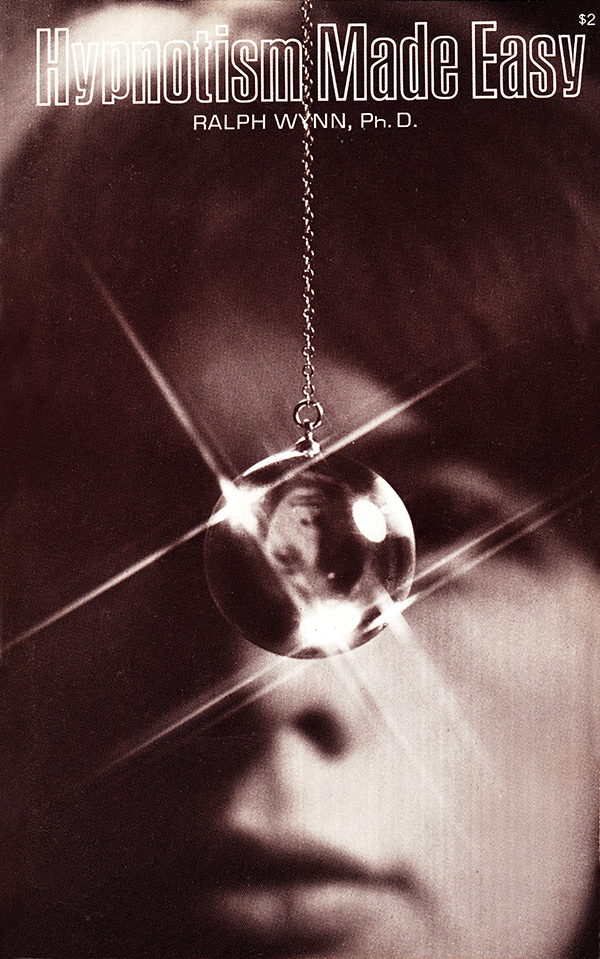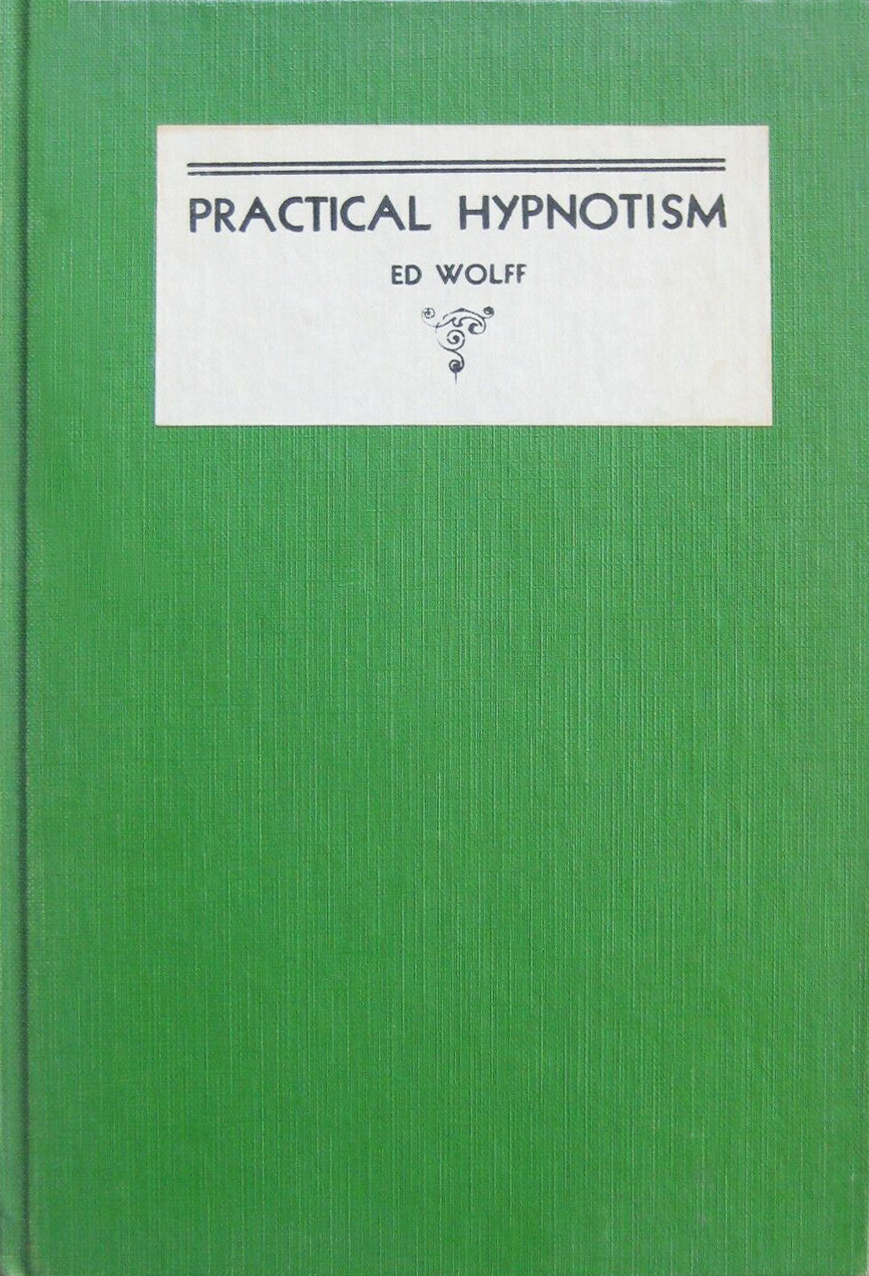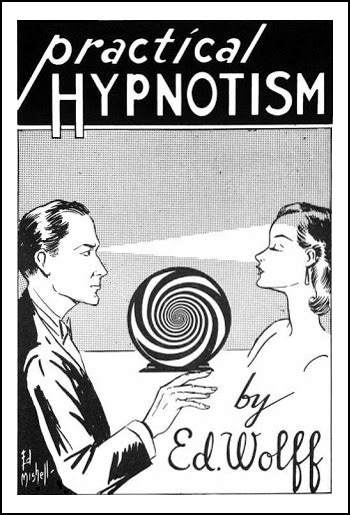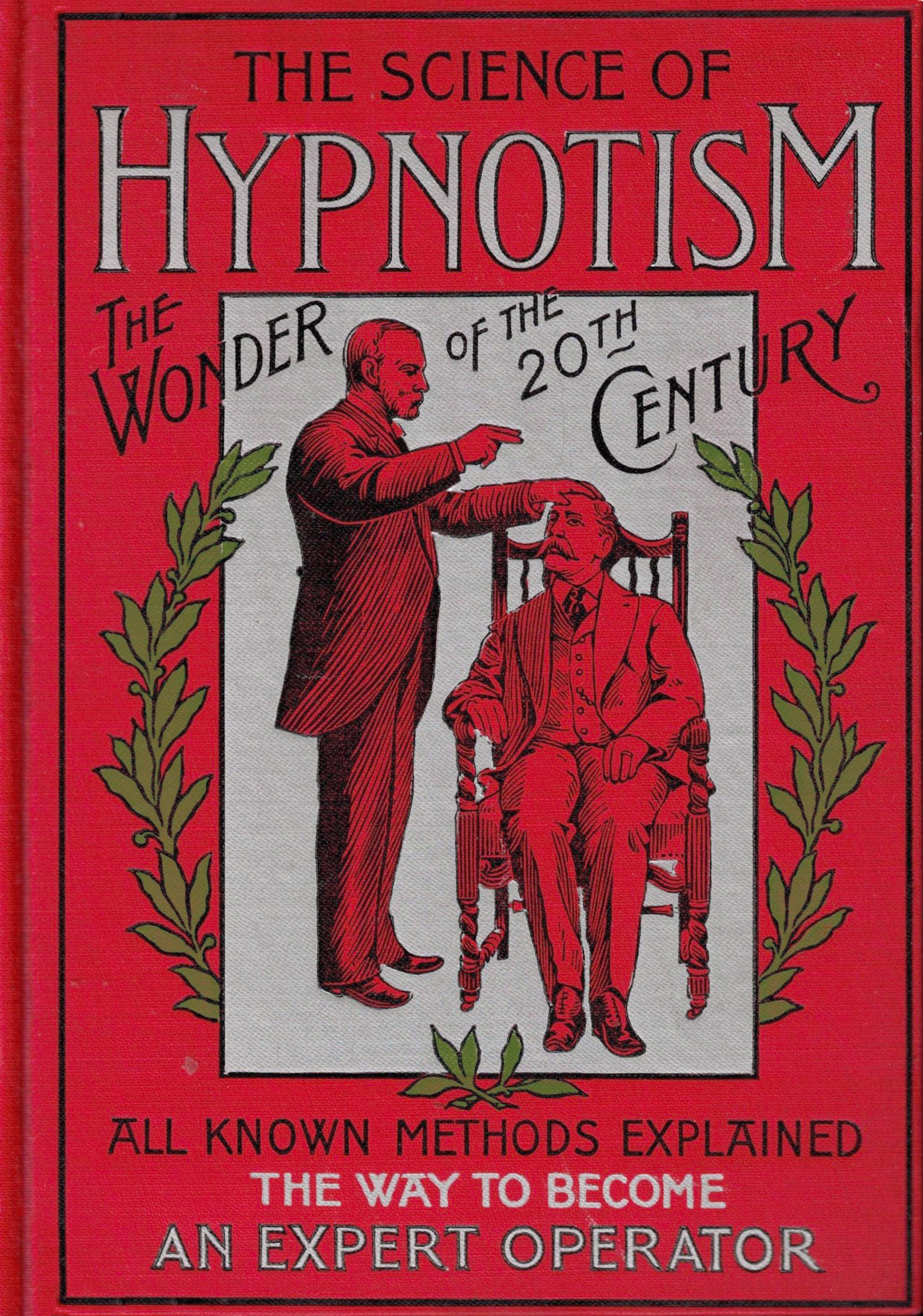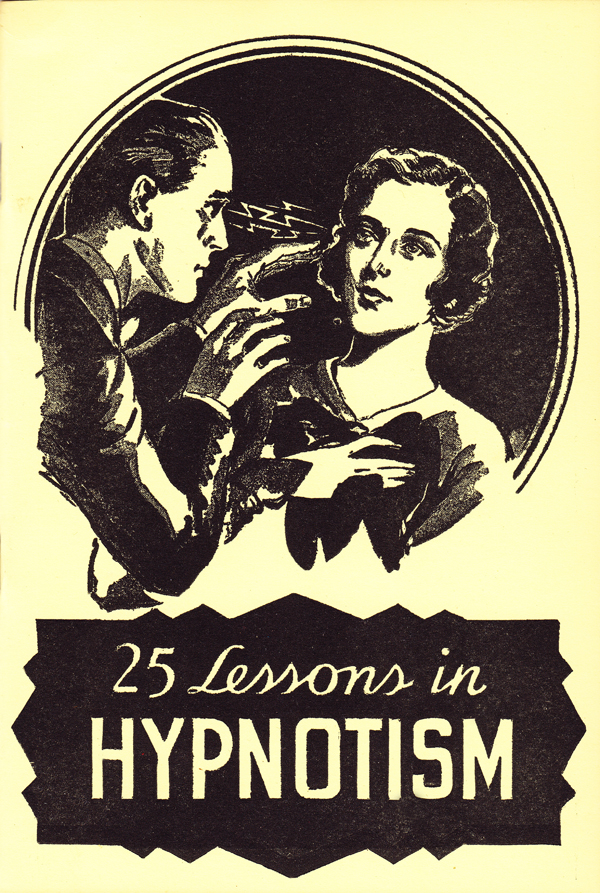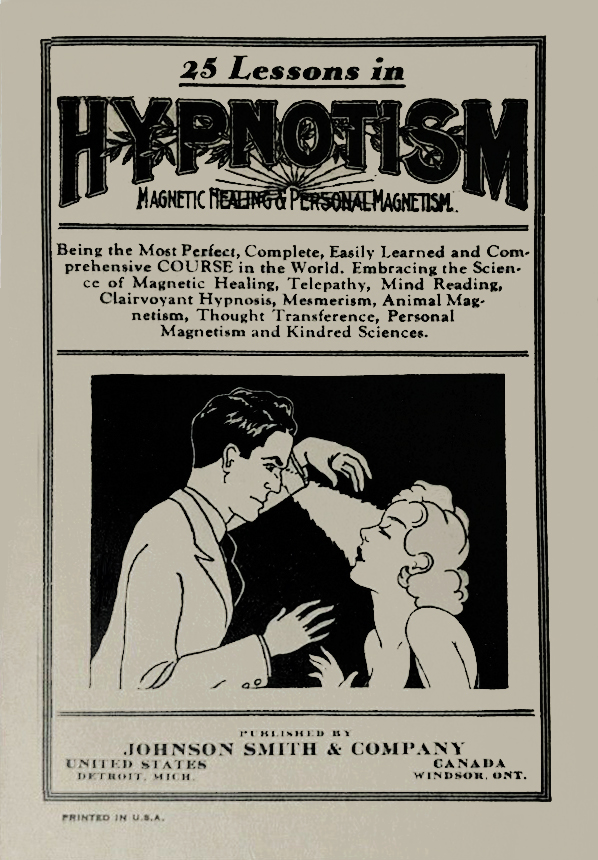the Preservation and Popularization
of Indigenous Ethnomagicology
(YIPPIE!)
A bibliography compiled by catherine yronwode
Yronwode Institution for the Preservation and Popularization of Indigenous Ethnomagicology
(Y.I.P.P.I.E.)
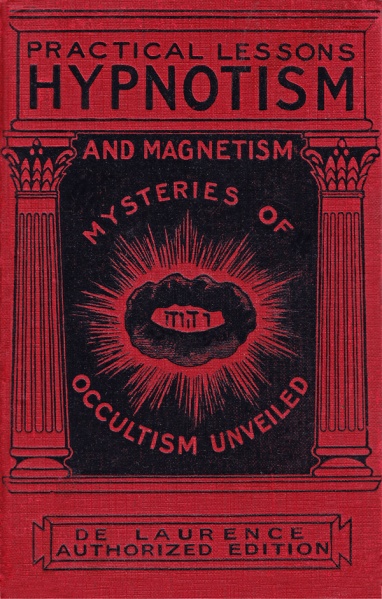
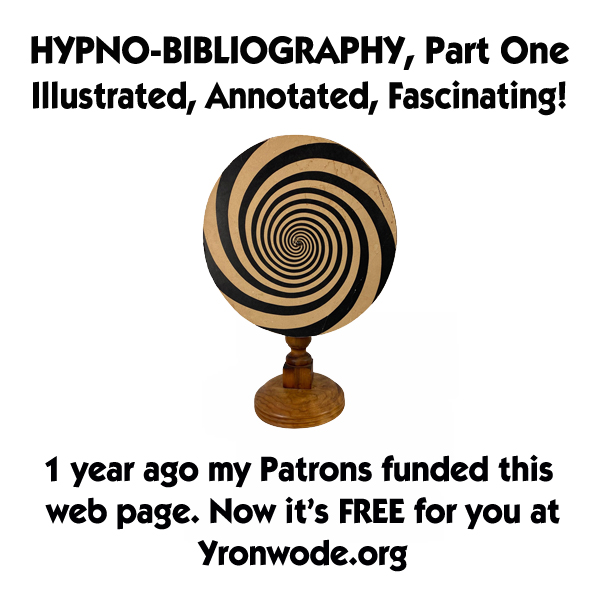
|
|
|
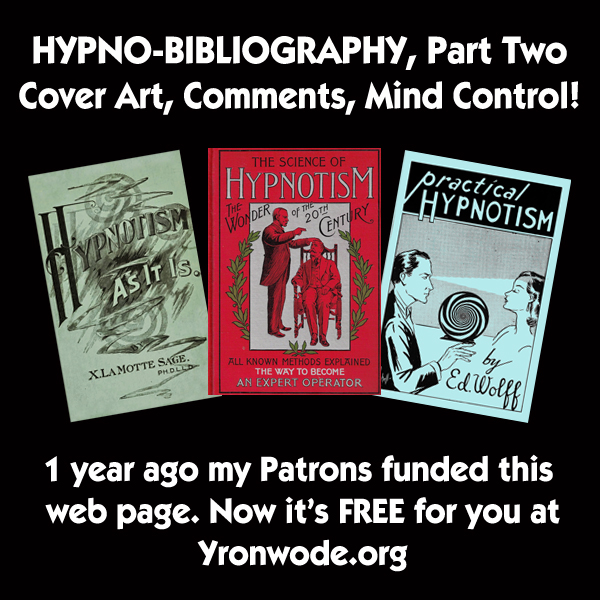
|
|
|

|
|
|

|
|
|

|
|
|

|
|
|

|
|
|

|
|
|
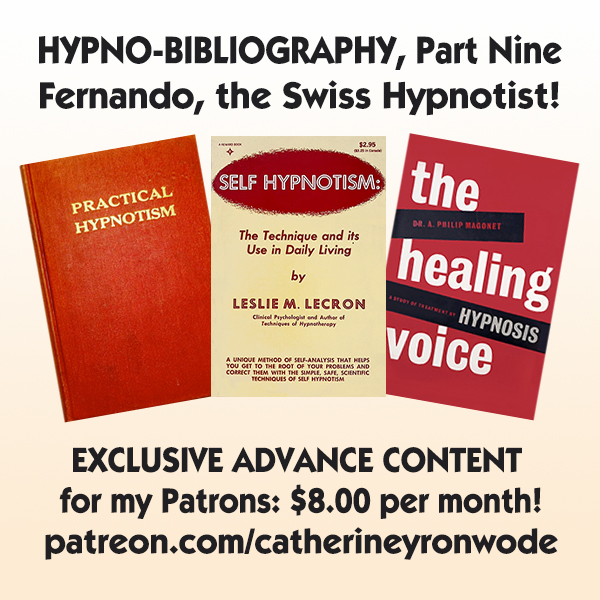
|
|
|
• Patreon Release Date: August 21st, 2022.
• Public Release Date: August 21st, 2023.
• Patreon Release Date: August 28th, 2022.
• Public Release Date: August 28th, 2023.
• Patreon Release Date: September 21st, 2022.
• Public Release Date: September 21st, 2023.
• Patreon Release Date: October 7th, 2022.
• Public Release Date: October 7th, 2023.
• Patreon Release Date: October 21st, 2022.
• Public Release Date: October 21st, 2023.
• Patreon Release Date: March 14th, 2023.
• Public Release Date: March 14th, 2024.
Support YIPPIE
Each new YIPPIE web page is circulated to Patrons as an advance copy. After one year access for Patrons, each page is released to the public. Patrons have access to a Private Patreon sub-forum within the Lucky Mojo Forum, and are accorded special Red Star Avatar badges at the Forum.
Please tell your friends that they can subscribe to my Patreon stream for $8.00 per month:
•
"It's All Ephemera with Cat Yronwode"
To discuss this and other YIPPIE pages with me, join my private Patreon Forum here:
•
Private Patreon Forum for Yronwode.org Bibliographies
Compiler's Notes on the Contents of This Bibliography:
Truth to tell, when i started this bibliography in 2022 i thought it would be short but sweet, the work of two weeks at most. To my dismay, the number of uncatalogued books on my left-side desk pull-out quickly DOUBLED, as i lucked into a large stash of used paperbacks on hypnotism that were published, but not written by, the inimitable Melvin Powers, who was both a subject of, and ultimately the reason for, this work. The bibliography kept continually growing, while the pile of hypnotism books on the left-side pull-out of my desk shrank, but after two weeks of effort i had more than 20 uncatalogued books in my stack, and thanks to the assiduous work of Leslie J. Meacham (see below), i had a list of many more rare books to locate.
I would not have undertaken this enormous task if someone else had already done it -- but no one has. My desire to document hypnosis in popular culture arose because in looking over the internet in 2022, i found an excellent bibliography of academic, psychological, and clinical books on hypnotism, but no good list of recommended popular books on the subject. My plan at present is to create an accesible and annotated catalogue of popular 19th and 20th century books on Hypnosis and Hypnotism, drawn from my own life-long collection, and, insofar as my enthusiasm carries me, to document 21st century books on the topic as well.
I continue to purchase old books, and more are always on the way, intended to replace the library i lost during the Guerneville flood of 1986. Rebuilding my lost libraries and lost museum of ephemera has taken me many years, as i was also working on recovering from a financially disastrous divorce, starting a new business, and embarking on a new marriage -- but recreating my old hypnosis collection brings up fond memories and special delights. As a mature collector with some financial resources, i can now buy fine condition examples of antiquarian rarities which in my youth i had only in the form of thrashed and marked-up ex-libris copies.
Who am i building this new, improved, and restored hypnotism library for? My daughter doesn't care. I doubt either of my grandchildren will. Many of the titles have already been digitized and are available online. Few university libraries are investing in rare books anymore.
I guess i'm just doing it for myself, to prove to myself that mass culture -- even niche mass-culture -- can be recreated if lost, and that someone, somewhere, understands the value of the written word.
If you like what i do, buy a psychic reading from me, will you? Pretty much all the money i make from reading tarot has been going into hypnotism books and other antiquities these days.
Compiling a bibliography of books about hypnotism is not easy. For one thing, there are so many conflicting ideas about what hypnotism is that the topic shades into other topics in imperceptible stages, until you suddenly find that you are reading a list of hypnotism books that includes clinical texts on psychological states of consciousness, or instructions in stage magic and mentalism, or promises to teach you how to remember past lives, or holds to the viewpoint that self-hypnotism is a form of New Thought or affirmative prayer, or tells you how to contact the dead through Spiritualist trances, or offers to put you in touch with extraterrestrial aliens while you solve the mystery of cattle mutilations.
Hypnotism is real, and it is helpful. It can be used for entertainment or as an adjunct to therapeutic weight loss, smoking cessation, reduction of anxiety, and pain management. You can employ it in a spiritual or magical context to explore the mind, find answers to questions, and open mental doors to new and improved patterns of behaviour. You can induce a hypnotic trance in yourself or have it done to you. I have experienced it, and induced it in others, and you definitely can learn how to do these things through books.
For more information on hypnosis, click this link to read a brief article i wrote
about hypnotism for the Association of Independent Readers and Rootworkers in 2021:
"Hypnosis Coaching and Training" by cat yronwode
But before you get any farther into this bibliography, i want you to undertand that i personally do not believe in past lives, nor do i think that hypnotism will help you to greet visiting UFOs. I do, however, find that older books on stage hypnotism, even though they are published for the use of entertainers, contain valuable information about how to induce a trance. I also find popular books on hypnotism to be just as valuable as books that originate within the clinical community -- in fact, i generally like them more.
Therefore, i am going to set some boundaries.
Within this bibliography you will find:
* Books about Mesmerism and animal magnetism (older terms for hypnosis)
* Books about auto-suggestion (an old term for self-hypnosis, and also for self-help)
* Books about hypnosis or inducing a trance state in a client or patient
* Books about using hypnotic techniques to affect a person in a social setting
* Books about self-hypnosis or inducing a trance state in yourself
* Books about stage hypnosis for the purpose of entertainment and education
* Books about medical and dental hypnosis for relaxation and pain management
* Books about hypnosis for self improvement and removal of bad habits
* Books about clinical hypnosis that is administered in a therapeutic setting
But you will NOT find:
* Books about extra-terrestrial aliens
* Books about past life regression
* Books about cattle mutilation
* Books about ascended masters
* Books about ghosts or haunted houses
* Books about paranormal experiences
* Books in which Spiritualism or contact with the dead is the major topic
* Books in which New Thought or affirmative prayer is the major topic
(For New Thought books, see the New Thought Bibliography at this site.)
Most of the books listed and shown here come from my own collection, but i have also consulted other bibliographies and dealer lists for publication information. All annotations and reviews are mine, unless they are noted as "Publisher's blurb" or "Advertisement," in which case they derive from the book's back cover or dust-wrapper ends, or from trade advertisements. Although my interest is in hypnosis in popular culture, i want to thank the American Society of Clinical Hypnosis for their bibliography of books on clinical hypnotism published between 1976 and 2017, which i have consulted to obtain publication data on books not in my possession.
Keyword Concepts Associated with Hypnotism
* Animal Magnetism
* Auto-Suggestion
* Cataleptic Trance
* Catalepsy
* Clinical Hypnosis
* Fascination
* Hypno-Coin
* Hypno-Disk
* Hypnotic Trance
* Induction
* Magnetic Healing
* Manchurian Candidate
* Mass Hypnosis
* Medical Hypnosis
* Mesmerism
* Mind Control
* MKULTRA
* Operator
* Oneirosis
* Passes
* Personal Magnetism
* Post-Hypnotic Suggestion
* Self-Help
* Self-Hypnosis
* Somnambulism
* Stage Hypnotist
* Suggestibility
* Subject
* Svengali
* Therapeutic Hypnosis
* Trance States
* Trilby
* Unnatural Sleep
* Vital Magnetism
BOOK TITLES
A B C D E F G H I J K L M N O P Q R S T U V W X Y Z
== A ==
|
Anderson, L. [Lewis] H. How to Hypnotize: A Most Valuable Guide. The National Institute, Masonic Temple, Chicago, Illinois, 1896 First edition, bound in maroon textured cloth with embossed black and silver illustrations and lettering, edges stained red. Another edition: Dark blue and black cloth hardcover with embossed illustrations and lettering. 237 pages, illustrated with frontispiece portrait of the author, black and white plates, and 33 page of ads.
This is a veritable course book in hypnotism, printed and bound to the highest
standards of its time. The contents include:
The misnumbering and eventual correction of the chapter numbers aside, this is a deluxe book,
with very fine half-tone illustrations from photos on clay-coat paper throughout. The text is fairly
typical for the late 19th century, relying heavily on history and personal anecdotes, and according stage hypnotism
the same respect given to clinical hypnosis. The insistence on the validity of hypnosis
as a treatment or cure for mental distress and chronic pain is plain, but the author
goes further and also introduces occult ideas such as clairvoyance or telepathic hypnosis.
Given his other book titles, this is not out of character for him. As a New Thought author,
he also wrote:
There is a faint whiff of William Walker Atkinson in this book, from the publication at the Masonic Temple in Chicago and the chapter titles with their careful Roman numerals, to the five other books, all on on New Thought topics, including personal magnetism. I can't say there is a connection, but i have not been able to rule one out either.
|
|||||||||
== B ==
|
Bacon, Axel Wayne. Hypnotism: Course of 17 Practical Self-Study Lessons on Hypnotic Power, How To Develop It and How To Use It. Nelson-Hall Inc., 1945. Various editions, both paperback and hardcover with dustjacket. Rep. 1949. Rep. 1959. Rep. 1960 i-xxiiii + 8-266 pages (282 pages). Paperback and hardcover. Line-art illustrations on pages 161, 171, 211, 217, and 245. I have acquired and viewed several editions of this book, and the chief difference i have found between them is in the weight of the paper; the hardcover editions use the same illustration on their dust-jackets that the paperbacks use on their covers. The 1945 Nelson-Hall edition, the earliest date for which the publisher claims copyright, contains a reference on page 15 to "our waning nineteenth century," and the pen-and-ink illustrations depict people in clothing of the late 1920s or early 1930s at the latest, so it is obvious that 1949 is not the original publication date. All that aside, this is an excellent introduction to hypnotism, highly recommended. It went through so many editions that it is easily found in the used book market, and it should be in everyone's hypnotism library, if only for its exciting cover art, which really puts the viewer in a magnetized mood. |
|||||||||
|
Blair, Forbes Robbins. Instant Self-Hypnosis: How to Hypnotize Yourself with Your Eyes Open. Sourcebooks, 2004. 208 pages.Paperback Publisher's blurb: "Hypnosis is a proven technique that allows people to reprogram their subconscious to change unwanted behaviors. Most books on self-hypnosis require the reader to memorize or record scripts, then put the book aside while they do their hypnosis work. But Instant Self-Hypnosis is the only self-hypnosis book that allows you to hypnotize yourself as you read, with your eyes wide open, without putting down the book. "The author's fail-proof method allows you to put yourself into a hypnotic state and then use that state to improve your life in myriad ways. And because the hypnotic state is induced while you read, you remain aware of your surroundings and can bring yourself back to normal consciousness slowly and gently, using the instructions provided. "Forbes Robbins Blair has been teaching and performing hypnosis since 1997 and has a certification in clinical hypnotherapy. He also facilitates dream groups and teaches classes on dream analysis. He has made numerous appearances on radio and television. He lives in Silver Spring, Maryland."
|
|||||||||
== C ==
|
Calostro [Robert Doidge]. Entertaining with Hypnotism. A Calostro Publication, date unknown [i have never seen a first edition]; reprinted many times, including posthumously, and available as a digital download. 40 pages, saddle-stitched in stiff wraps. • Foreword • 1. The Origin of Hypnotism • 2. What Is Hypnotism? • 3. Who Can Be Hypnotized? • 4. Who Can Become A Hypnotist? • 5. The Effect On and How to Awaken a Subject • 6. Medical Hypnotism • 7. The Conscious and the Subconscious Mind • 8. Degrees of Hypnosis • 9. Hypnotism by Phonograph Recordings • 10. How to Hypnotize Others [Four Methods] • 11. Mass Hypnosis • 12. Individual Demonstrations and Tests • 13. Retrogression of Memory • 14. Post-Hypnotic Suggestion • 15. Hypnotizing at a Distance • 16 Auto-Suggestion and Self-Hypnosis • 17. How to Hypnotize Yourself • 18. Final Comments Robert William "Bob" Doidge (1892-1967) was a professional mentalist and hypnotist from 1917 onward, performing on stage as "Calostro." He served in World War One in 1918 and thereafter was also an author and publisher of books on stage magic, mentalism, and hypnosis. "Entertaining with Hypnotism" contains eighteen lessons on hypnotism for showmen, packed into 32 pages of small-font text. Good things come in small packages, and this is an excellent book on stage hypnosis. Its valuable ideas and concision of presentation has caused it to remain in print long after the author's death. From the Foreword: "With few exceptions, the published data available on hypnotism is either too weighty with scientific theory, if a serious work, or it contains too much fakery, if stage hypnotic demonstrations are being described. It is this author's purpose to condense the latest and best methods and ideas into easy, understandable language, so that the lay person may have before him an easy-to-follow, compact summary of the art." |
|||||||||
Coue, Emile. Self Mastery Through Conscious Autosuggestion.
[many editions; this is but one] American Library Service. 1922.
|
Cunningham, Les. HypnoSport: The Creative Use of Hypnosis to Maximize Athletic Performance. Westwood Publishing Co., 1981 A book that was ahead of its time, HypnoSport by Les Cunningham opens the way for athletes to realize their full potential, through professional hypnotism and by self-hypnosis. This is the flip-side to the well-known use of hypnosis to eliminate addictive cravings, because instead of reducing the negative, the author offers a path to increasing the positive, emphasizing will-power through access to the body-brain connection.
|
|||||||||
== D ==
|
De Dubor, Georges (Translated by G. M. Hort). The Mysteries of Hypnosis (Les Mysteres de l'Hypnose). William Rider & Son, London, 1922. Hardcover. Deckled pages. In addition to hypnotism, the French author Georges de Dubor (1848-1931) also wrote about viticulture, ancient Assyria and Chaldea, and madrigal music. The author speaks against Spiritualism as a source of hypnotic trances, and asserts that most so-called paranormal phenomena, such as dowsing, telepathy, clairvoyance, are "produced by the agency of living persons, and by means of those supernormal faculties which are, undoubtedly, possessed, and exercised, by certain exceptional individuals." In this he allies himself with his contemporaries in the "practical" or "scientific" schools of dowsing and crystal gazing, for he does not call upon spirits to aid him in the induction of altered states of consciousness or the receipt of exceptional knowledge. My favourite part of this book is the author's detailed accounting of the induction methods of 19th century hypnotists. Some of these are quite interesting and rarely encountered in the 21st century, and de Dubors gives them in each practitioner's own words. For instance, we learn of Dr. Richet, who says, "I put the patient in an arm-chair, directly in front of me; and then, taking hold of his thumbs, one in each hand, I subject them to firm and regular pressure for the space of three or four minutes" and Dr. Bernheim, who tells patients, "Look at me, and think of nothing but sleep. You will feel a heaviness of the eyelids and a weariness of the eyes, which will begin to blink and to water. Your sight will become blurred. Your eyes will close.” We also hear from Dr. Moutin, who sits on a chair higher than the patient and holds their hands while staring into their eyes, and Charcot, whose employed "rough and violent methods" and would "flash a light in the patient’s face, cause a tom-tom to be beaten near by, or uncork a bottle of ammonia under the patient’s nostrils" to induce a trance. And then there is Dr. Esdaile of Calcutta, who learned hypnotism from the Hindus, and explains that "the subject reclines upon a bed, in a darkened room, and the magnetiser leans over him, with eyes fixed upon him, and with his face almost touching that of the subject." I could go on and on ... but luckily for you, this entire book has been scanned and is online for free. If you can't afford an original printing, check it out ar Archive.org.
|
|||||||||
|
De Laurence, L. W. Practical Lessons in Hypnotism and Magnetism: Mysteries of Occultism Unveiled Frederick J. Drake and Company, Chicago, 1902; rep. 1928. 266 pages. Hardcover; illustrated with photographs. Because L. W. de Lawrence was a notorious book pirate who violated the copyrights of many authors, it is difficult to determine, without close examination and study, what he wrote himself and what he republished under his own name. This may actually be one of his own books, but i am willing to be corrected, if some other bibliographer knows better. In any case, this is an excellent look at hypnotism from the psychical and occult viewpoint, supported by many anecdotes, but not many instructions. The method de Laurence teaches is based on the operator's will-power, intensely focussed gaze, and verbal suggestions, and hand-passes, which is sometimes known as "the Svengali effect." He recognizes five levels of induced trance in the subject: (1) passivity, (2) passivity with attention, (3) acute passivity with acute attention, (4) complete fascination, and (5) hypnosis.
|
|||||||||
|
De Saint-Germain, Comte C. Practical Hypnotism: Theories and Experiments, Ancient Mystery Unveiled Laird & Lee Publishers, Chicago, 1901. 260 pages. Hardcover and paperback editions exist with varied covers, including a stamped pictorial cloth binding, a printed art paperback, and plain text covers; illustrated. This excellent volume covers all facets of the practice of hypnosis and is highly recommended; like other English-language texts on hypnotism from this era, one of its aims it to present the work of French hypnotists and mesmerists to a new audience, and in that it succeeds quite well. As the publisher's blurb has it: "Compiled from the works of Braid, Charcot, Luys, Liebault, Wetterstrand, Bernheim, Moll, De Courmelles, etc., the Great Medical Authorities on the Subjects. General Instructions, Theories and Experiments. Highly illustrated." The author of this book is not the historical Comte de Saint Germain (1710-1784) nor is he the ascended master Saint Germain of Theosophy and the I Am Movement; he is instead the author of several well-regarded late 19th and early 20th century occult teaching books: "Practical Astrology," "Practical Hypnotism," "Practical Palmistry," and "The Study of Palmistry for Professional Purposes." All are available as reprints and in digitized form.
|
|||||||||
== E ==
|
Eldridge, Edward Henry. Hypnotism: What It Is, What It Can Do, How to Use It: a Full and Complete Course of Instruction for Entertainment and the Scientific Treatment of Physical and Mental Diseases 1900. 96 pages. Also later issued as Eldridge Edward Henry. Practical Hypnotism: A Complete System of Method Abridged: What It Is, What It Can Do, and How to Use It: No. 9. "Copyrighted 1914, Kerner and Getts." L. & M. Ottenheimer, Baltimore. 1914. I have not yet found a copy of the original 96 page book from 1900 or the "Abridged" version from 1914, but here is a photo of a totally thrashed copy of the latter. I do not know what "No. 9" refers to, but it appears on both the cover and title page of the Ottenheimer edition. I do not know who "Kerner and Getts" were. See also Eldridge's later title, the 198 page "Hypnotism: Its Uses and Abuses" from 1902. Perhaps the second book incorporates the first; perhaps they are entirely different. Any help on this conundrum would be appreciated. This book is not to be confused with the identically-titled "Practical Hypnotism" by Fernando (1913) or "Practical Hypnotism" by Ed Wolff (1936), or "Practical Hypnotism" by Dr. Philip Magonet (1972).
|
|||||||||
|
Eldrige, Edward Henry. Hypnotism: Its Uses and Abuses, Together with Full and Complete Directions Showing How Any One Can Learn to Hypnotize. The Penn Publishing Company, Philadelphia. 1902, 1903, 1910, 1918 198 pages. Hardcover, octavo, pictorial binding in variant colours according to edition, some editions with dust wrappers. In its the time, "Hypnotism" by Edward Henry Eldridge went through many printings with pictorial bindings in variant colours according to the edition, and some editions also come with dust jackets. As the many printings demonstrate, it was extremely popular during the early 20th century and it is therefore not at all surprising that it is available in both pdf and print-on-demand forms in the 21st century.
|
|||||||||
|
Estabrooks, George H. Hypnotism. E. P. Dutton, 1943, with 10 printings by 1955; new edition (revised) 1957, and at least one more printing by 1959. Hardcover with dust jacket; early printings in pale blue cloth, revised printings in red cloth. Plume, 1959, reprint Paperback This book seems to have been quite popular, going through at least ten printings in 16 years, from a very well known mass-market publisher. However, it is extremely difficult to find it in the used book trade, and copies in less-than-steller condition, with torn or missing dust wrappers, have been known to fetch prices in the multiple hundreds of dollars. This has led to the unproven theory that at one time someone (cue the CIA) was buying up copies to use or to remove from circulation because the methods proposed were of national security importance. At the risk of sounding a bit like a nut case, i think there is some truth in the legend surrounding Estabrooks' "Hypnotism." To begin, Estabrooks is not telling you how to put your friend in a trance and have him crow like a rooster. He is all about post-hypnotic suggestions, hypnotism in crime, hypnotism in warfare, and, as he puts it, "This Man Hitler." Yes, he deals candidly and frankly with "forbidden" topics, such as mass hypnosis and the creation of suggestible killers. In his opinion, hypnosis is not inherently "safe." It can be used for nefarious purposes -- and he will show you how! It can be said, with some basis in fact, that this book, with its emphasis on mind control, was the springboard for the CIA's running of the notorious MKULTRA (Mind Kontrol Ultra) project of the 1950s and 1960s -- the top secret program that (may have) brought us two Kennedy assassinations, the King assassination, and the widespread use of LSD-25. George H. Estabrooks definitely opened that door. If nothing else, his ideas formed the basis for the semi-factual film "The Manchurian Candidate." See also the entry on Lesley Kuhn and Salvatore Russo, for another look at down this same rabbit hole.
|
|||||||||
== F ==
|
Fielding, William J.; Edited by E. Haldeman-Julius. Autosuggestion: How It Works (Little Blue Book No. 447) Haldeman-Julius Publications, Girard, Kansas, 1923. 64 pages. Stapled wraps. All of the Little Blue Books edited and published by E. Haldeman Julius have faded to tan and most of them were printed on acidic paper which is flaking and crumbling, but they form a remarkable library of article-length pieces on philosophy, science, politics, and eccentric topics. This book on Autosuggestion is an excellent, if very brief, introduction to the subject of self-hypnosis. Publisher's note: "This discussion of Autosuggestion is continued in Autosuggestion and Health (Little Blue Book no. 449)." (And when i find a copy, you'll see it here!)
|
|||||||||
== G ==
|
Gibson, Walter Brown. The Key to Hypnotism. Key Publishing Company, New York, NY, 1956. 96 pages. Paperback, illustrated with photographs. Wonderful though he was as a writer, Walter B. Gibson (1897-1985) had singularly bad luck when it came to the art departments of his publishers. As noted below, his immensely useful book "Hypnotism Through the Ages" was covered by "one of the ugliest dust-wrappers in the history of printing," and as it so happens, this paperback must also be in the running for the top ten ugliest covers of books on hypnosis. Unlike the general-interest "Hypnotism Through the Ages," here we have a more specialized view. Gibson positions himself not only as a member of the American Society for Psychical Research, he also notes on the title page that he is not only the author of "Houdini's Escapes," "Houdini's Magic," "The Book of Secrets," "Human Enigmas," "&c., &c.," but he is also the "producer and narrator of American Broadcasting Company's program 'Strange,' the vice-president of the Magician's Guild of America, and past president of the Philadelphia Assembly, Society of American Magicians." In other words, this book is for those who would know him by his stage magic creds. Some of the historical research he later incorporated into "Hypnotism Through the Ages" is broached here, and takes up the first half of the book, but the rest of the text is devoted to a brilliant catalogue of the various methods used to put a person into a hypnotic trance, including passes with the hands, candle light, shiny objects, a focussed gaze, and more. In some cases, explanatory quotes from the original authors are included. Post-Hypnotic suggestion, as used on the stage, gets its due, and there are pages upon pages of creative examples of stage and private office patter and scripts to use when fascinating a subject. Most remarkably of all, this book is illustrated with extensive photos, modelled after the 19th and early 20th century Svengali-and-Trilby style images found in the classic books that Gibson loved -- and they are all posed by none other than ... The Amazing Randi! There is even a black boxed shout-out on page 54 in which Randi (Randall James Hamilton Zwinge, 1928 – 2020) is promoted as a "famous challenge escape artist and professional hypnotist." In 1956 Randi broke Houdini's record time for burial in a submerged coffin and Gibson attributes his success to auto-hypnosis. Randi appears throughout the book and on the cover in a formal long-tailed cutaway tuxedo, all of 28 years old, with an almost full head of hair. This was before he set up an alternate career as a professional debunker and grouch, of course. So, although this is a book that may confuse novices or those who do not like the fact that stage magicians use hypnotism to good effect, it is a rare treasure, if only for the sharp laugh it will evoke among the anti-Randians who stumble upon it unawares. No magicians's library should be without it!
|
|||||||||
|
Gibson, Walter Brown. Hypnotism Through the Ages. Vista House Publishers New York. 1961 124 pages Hardcover with dust jacket; also paperback Reissued as Hypnotism; What It Is, How It Is Done; Its Uses; Different Methods; Experiments and Case Histories Grosset & Dunlap, New York. 1969 Castle Books, New York. 1970. Walter B. Gibson was an author and professional magician best known for writing the pulp fiction character The Shadow. Under the pen-name Maxwell Grant, he crafted more than 300 Shadow novels, at the rate of up to 10,000 words a day during the 1930s and 1940s. Under his own name he also wrote non-fiction books on occult, metaphysical, and magical subjects. I love Walter B. Gibson's writing, and i liked him as a person too, having met him several times at conventions during a period of renewed interest in his work as the author of "The Shadow." Like his famous fictional character he wore a sparkling girasol opal ring and "had the power to cloud men's minds so they could not see him." Yes, the Shadow -- and his author, Walter B. Gibson -- were both hypnotists! Despite being shrouded by one of the ugliest dustwrappers in the history of printing (signed, no less, by a graphic designer named "Weinstein"), "Hypnotism Through the Ages" is an important work on the subject. Gibson, obviously a bibliophile himself, had access to all of the great books on hypnotism from the mid 19th to mid-20th centuries, and he did an amazing job of summarizing their salient points, including their agreements and dissensions. The sheer amount of research that went into making this overview is astounding, and Gibson gives you the better-than-Cliff-notes version of a full century of hypnotism -- and more, because he also takes you on a multi-millennium-spanning hypnotic tour through time, from the Pharaohs to Paracelsus and from the Tarantella dance craze to Trilby and Svengali. So this is pretty much a must-have item for any would-be hypnotist. For a thorough bibliography of the many, many works of Walter B. Gibson, see "Man of Magic & Mystery; A Guide to the Work of Walter B. Gibson" by J. Randolph Cox (1988; Scarecrow Press, Metuchen, NJ).
|
|||||||||
|
Gindes, Bernard C. (M.D.) New Concepts of Hypnosis: Theories, Techniques, and Practical Applications as an Adjunct to Psychotherapy and Medicine. Foreword by Melvin Powers. Introduction by Robert M. Lindner. Wilshire Book Company, Hollywood, California, 1951, 1979. 262 pages plus advertisements. • Introduction • 1. Why Hypnosis? • 2. The History of Hypnosis • 3. Theoretical Aspects • 4. Mechanism of Hypnosis • 5. Characteristics of Hypnosis • 6. Necessary Conditions in Hypnotic Procedure • 7. Objective Methods of Hypnotic Induction • 8. Subjective Methods of Hypnotic Induction • 9. Suggestive Therapy • 10. Hypno-Analysis and Hypno-Synthesis • Appendix: Case Histories The cover shown here is from the 1979 edition of the book, when Melvin Powers had discovered the wonders of Dover clip-art borders. This is a dense text on clinical hypnosis, filled with bibliographic references and ponderous instructions for the post-war doctor who wished to add hypnotic suggestion to then-contemporary practices in psychotherapy, obstetrics, dream interpretation, and memorization. I cannot say that i found it to be a fascinating read, but Gindes makes some good points, and i think that Melvin Powers was right to publish it, even though it would not be of interest to his pop-culture audience. If i were planning a career in clinical hypnosis, i would pick it up and give it a read. |
|||||||||
== H ==
|
Hammond, D. Corydon, PhD [Editor]. Handbook of Hypnotic Suggestions and Metaphors. W. W. Norton & Company, 1990. 627 pages. Publisher's blurb: "D. Corydon Hammond, Ph.D., ABPH, is past president and a fellow of the American Society of Clinical Hypnosis (ASCH), which honored him with a Presidential Award of Merit in 1989. He also received the ASCH Irving I. Secter Award in 1990 and the Thomas P. Wall Award for Excellence in Teaching of Clinical Hypnosis in 1994. He is Professor of Physical Medicine and Rehabilitation and Co-director of the Sex and Marital Therapy Clinic at the University of Utah School of Medicine. He has written six books, including the Handbook of Hypnotic Suggestions and Metaphors. He coordinated a national task force on hypnosis and memory and is the primary author of Clinical Hypnosis and Memory: Guidelines for Clinicians and for Forensic Hypnosis and of ASCH's Standards of Training in Clinical Hypnosis."
|
|||||||||
|
Harraden, Lew Alexander. How to Give Hypnotic Exhibitions, with History of Hypnotism The Betts Publishing Co., Jackson, Michigan. 1900. 64 pages. Paperback, lavishly illustrated with pen-and-ink drawings by "Snyder,". As Prof. L. A. Harraden, the author gave demonstrations of hypnotism in theaters by putting random audience members into trance states. This book is a companion to his Complete Mail Course of Twenty Illustrated Lessons in Hypnotism and presents his stage techniques. Pages 1 through 14 comprise a well-written history of mesmerism and hypnotism through the end of the 19th century. On page 15 the instructions on stage hypnotism begin. These are very thorough, and include entire programs from start to finish, with exemplary patter. Also shown are sample advertising handbills that either promote the side-splitting antics that ensue when the visiting Professor hypnotises your small-town neighbors into crowing like roosters, or present a more dignified program of "thorough-going tests of the Wonder-Science of the Century." Haraden's stage induction was much like a regular hypnotist's office induction. He stood facing the seated subject, leaned down and asked the subject to focus on the tips of his fingers, and spoke gently of how sleepy the subject was becoming. He noted that children are the easiest to put into a trance, but that you should not keep them in a somnambulistic state for too long.
|
|||||||||
|
Hutchison, A [Alice]. M. (M.D.) Hypnotism and Self-Education T.C. and E.C. Jack, London; simultaneous release by Dodge Publishing Co., New York, 1915. 96 pages. (90 pages of text plus Bibliography and advertisements.) Volume 18 in The People's Books series; cloth bound. • Preface • I. History of Hypnotism • II. Methods of Inducing Hypnosis • III. Phenomena of Hypnotism • IV.Suggestion • V. Theories of Hypnotism • VI. Self-Suggestion • VII. Medical Treatment • VIII. Education of Children • IX. Education of Oneself • Bibliography • Index This is a small, thin, hard-bound volume in the usual formal of The People's Books, a library of almost 100 titles covering topics such as philosophy, religion, history, literature, economics, and science, which were intended to reach aspirational lower-class or poor people with the equivalent of a good education. The authors were progressive, although more middle-of-the-road than those who wrote for the American series of left-leaning Little Blue Books published by Haldeman-Julius in Girard, Kansas. However, the publishers made up for this with their much more aesthetically pleasing format, their sweet little cloth covers, and their tidy typesetting. Alice Hutchison, being a medical doctor, takes a psycho-therapeutical approach to hypnotism, including the use of suggestion to enable children to succeed in life, and the use of hypnotism to address diseases of mental origin. There is a solid Edwardian acknowledgement of life's many causes for suffering, and a hope that self-suggestion and thought-control may lead the wounded and sorrowful away from depression and into a second chance for happiness. Stopping just short of self-affirmation techniques or the New Thought Movement, and giving very few hints at how to induce a hypnotic trance or auto-hypnosis, the author presents her best case for working on the mental health of the masses, by every means possible.
|
|||||||||
== I ==
== J ==
== K ==
|
Kuhn, Lesley and Russo, Salvatore (Editors). Modern Hypnosis. Psychological Library Publishers, New York, 1947 349 pages including a bibliography. Hardcover. Wilshire Books, North Hollywood, California, 1975 (with a Foreword by Melvin Powers and and an introduction by Andre Weitzenhoffer, PhD). Paperback Available through several print-on-demand publishers. Lesley Kuhm was the editor of the periodical "Your Mind: Psychology Digest" and Salvatore Russo was the Director of the Veterans Service Bureau of Trenton, New Jersey. Given those credentials, it is to be expected that their excellent compilation of previously published articles on hypnotism would be a definitive post-World-War-II spin on the subject, emphasizing the therapeutic aspects of hypnosis, in the fields of anesthesiology and psychology. This is not a book for the amateur hypnotist. It is dense, scholarly, and, perhaps, a little bit boring. It contains the very best thinking on the subject of hypnotism at mid-20th century, when hypnosis passed from being understood as a directed trance induced under the authority of an "operator," to being seen as a collaborative neuro-psychological venture conducted under the guidance of a professional hypnotherapist or a self-induced mental state-change learned by the study of effective techniques available in popular manuals of instruction. It was this last method that formed the basis for many popular post-War books on hypnotism, especially those published by Melvin Powers; in fact, Powers reprinted this book in 1975 under his Wilshire Books imprint! The cover shown here is from the Powers paperback edition of 1975. As noted under the entry for George H. Estabrooks, the CIA knew that post-hypnotic suggestions were gaining favour in the treatment of post-traumatic stress disorder among ex-combat soldiers, so they came up with a program in which they tried to turn arms-trained veterans into hypnotic subjects who could be deployed to commit assassinations on command. This was not Kuhn and Russo's plan, but their book -- taken in conjunction with the contemporary work of Professor G. H. Estabrooks -- led hypnotism down a dark path for quite a while.
|
|||||||||
== L ==
|
Lustig, David J. (La Vellma). Dunninger's Master Methods of Hypnotism. Dunninger Enterprises, New York City, nd, after 1926 - before 1930 25 oversizes pages, on slick paper with blank versos, in paper wraps; two printings exist, identical except for cover colour: one is greenish and the other is pinkish. • Introduction - La Vellma • A Twentieth Century Miracle Man Who Has Astounded Millions - D.J.L. • Hypnotism: A Vital Force ... A Means of Self-Improvement ... A Science That Has Shaken the World • The Dunninger Methods of Hypnosis Have Been Tested and Proven • Interlude [Various "Test" or stage presentations] • Hypnotizing ... Via Radio • Behind the Veil of Natural Laws, Disclosing Inner Secrets • Mind Reading and Mental Telepathy Aided by the Powers of Hypnotism • The Successful Hypnotist Must Have an Abundance of Self-Confidence • Hypnosis and Animals • Important Memorandums • In Passing ... • Final Comment • Newspaper Clippings Joseph Dunninger (1892 - 1975, was a famous American stage magician, mentalist, and hypnotist. He had a regular radio show in 1929 and again from 1943-1944. In the 1950s his show was televised, first on the NBC network and later on ABC. Both the radio and television versions featured Dunninger reading the minds of audience members and his visiting celebrity guests. David J. Lustig (1893 - 1977), performed as a stage magician from 1910 onward under the name La Vellma, and wrote books on stage techniques and presentation methods for his colleagues in the fields of mentalism, ventriloquism, and hypnotism. He also functioned as a press agent, advance man, and publicist for many of the best known stage magicians of the 1920s and 1930s. He designed Dunninger's "tests" or stage presentations of hypnotism, and he also wrote his own book on "Vaudeville Hypnotism" in 1930. In his later life he was a publicity agent for Columbia Pictures, setting up studio tours for the press and arranging media interviews for their movie stars. The oddities of its printing format aside, this is still an odd book, and not quite like any other Lustig book on stage magic. It consists in part of one-sheet press releases extolling Dunninger's talent to the skies, with the final page a publicist's scrap-bok, showing the many articles written about Dunninger's skill at hypnotism, particularly via the then-new medium of radio. But still, the core of the text is gold, as Lustig describes Dunninger's hypnotic techniques in detail, and gives extensive performance notes on how it is to be done. The nice thing about Lustig's preparation of Dunninger's hypnotism stage act is that he really did good research in legitimate hypnotism. The twelve methods of hypnotic induction he ascribes to Dunninger are a catalogue of the best 19th and early 20th century methods in use by clinical hypnotherapists, and his "tests" or stage demonstrations are adapted from earlier routines found in the classic books of Xenophon Lamotte Sage and Lou Ella Young. All quirkiness aside, this is a very good look at stage hypnotism from the point of view of an actual hypnotist, and i recommend it to those who have an interest in that facet of the work.
|
|||||||||
== M ==
|
Meacham, Leslie J. Lessons In Hypnotism and the Use of Suggestion, Based Upon the Neuron Motility Hypothesis. The Bishop Publishing Co., Cincinnati Ohio, 1898 Hardcover, red cloth, gold stamped lettering on cover. 192 pages: 159 pages of text plus 31 photographic half-tone plates "from photographs by Dr. Edwin P. Adams, Avondale, Cincinnati, Ohio." As the author's Foreword states: "The theory offered is in the main an elaboration of that first presented by Dr. F. X. Dercum of Philadelphia. It has been carefully considered in its application to all phenomena arising from suggestion. It has been accepted by leading physicians and psychologists." Francis Xavier Dercum (1856 – 1931) was a well respected neurologist of his era who held offices in numerous professional medical organizations, published more than 200 papers, and was called upon to treat the United States President Woodrow Wilson when he collapsed in the White House. By associating his interest in hypnosis with Dercum's Neuron Motility Hypothesis and the scientific experimentation which characterized Dercum's work, Meacham places his own text on hypnosis in a medical and therapeutic context. Quite a lot of the book is devoted to an explanation of neurons, axons, and dendrites -- with line drawings. It's like a bonus book on neurology before you even start in on hypnotism. Of course such knowledge is commonplace now, but it was cutting edge at the time, and Meacham was working toward a scientific rationale for the mental changes that can obviously be effected by putting a patient into a hypnotic trance. In particular, by emphasizing neurons, he raised the question of how memories are encoded in the brain and therefore how it is that a hypnotist can embed beneficial and uplifting self-awareness, delusions and follies, or frightening and angering ideas within a patient's proprioceptive sense of self. These are questions that go far beyond mere hypnotism, of course, and have broad application in areas such as leadership adulation, mass hysteria, false memory syndrome, "Manchurian Candidate" assassins, and the induction of unshakable beliefs in conspiracies and criminal activities which actually have no basis in fact. What is interesting to me is that Meacham, via Dr. Dercum's research, was anticipating a neurological theory of mind which even now, more than a century later, has still not been fully demonstrated. Meacham implies within the book that he himself has been a stage hypnotist, but that he has also worked with medical doctors to hypnotise patients in an attempt to retrain their minds through therapeutic suggestions. His interest lies specifically in the use of hypnosis to overcome bad habits, "neuroses," and the effects of trauma and chronic pain. This is a well-written book by a highly educated person who was fully abreast of then-curent medical theories, practiced hypnotism professionally, and, above all, had an active and enquiring mind. Recommended.
The chapters are:
An additional value to this book is found in Meacham's informal list of source-book titles. While not a proper bibliography or catalogue, this list was made just as hypnotism books in English were becoming available in America, so when i first ran across it, i was thrilled to see that it contained mention of quite a few rare volumes which i not only had never seen, but had never even heard of. It thus became, for me at least, a kind of Rosetta Stone that led me into a deeper understanding of hypnotism incunabula. I set out to acquire these books, and almost at once i found to my pleasure (and non-surprise) that Melvin Powers had already picked up on some of the titles and had reprinted them in facsimile paperback editions, with his usual outré covers and the prized "Foreword by Melvin Powers." In this bibliography, if a book is noted as "Listed in Meacham," the reference is to the source-books published here in 1898. |
|||||||||
== N ==
== O ==
|
Orton, J. Louis. Hypnotism Made Practical. An edition of 1926 is mentioned by the author; the publisher is not stated, but probably Thorsons. Thorsons, London, At least 11 Thorson editions, through 1958: 1947 (6th ed.), 1949 (7th ed.), 1951 (8th ed.), 1952 (9th ed.), 1955 (10th ed.), 1958 (11th ed.) Hardcover with dust jacket. 170 pages. Melvin Powers, Revised and Augmented 6th edition, with a Foreword by Melvin Powers, 1951. Harcover; pink cloth binding. Melvin Powers, Revised edition, with a Foreword by Melvin Powers, 1957. Paperback with pictorial cover Melvin Powers, Revised edition, with a Foreword by Melvin Powers, 1976, 1979. Paperback with a hot pink cover consisting only of typesetting. Here is one of my favourite books on Hypnotism. The author's experience with the subject reaches back to the early 20th century, when hypnosis was just making its first big impression on England and the United States. He notes that the first article he wrote about the topic -- "Hypnotism: What it Is and What it Does" was published in the "Weekly Times and Echo" on October 28th, 1911, and that it described his personal experiments, which he had begun in the year 1900 and concluded in 1909, at which point he felt he had enough experience to teach the subject to others. His first book, "Rational Hypnotism," was completed in 1910 and published in 1914. The first edition of "Hypnotism Made Practical" was released in 1926. This was a popular book. The publisher Thorsons noted in 1949 that "sales exceed 25,000 copies" -- and by 1958, on the occasion of printing the 11th edition, that "sales exceed 43,000 copies." And that was before Melvin Powers brought it out in hardcover and paperback and ran with it in three more editions and many printings for at least 20 more years. The covers shown here are for the 1949 Thorson's hardback edition, updated and revised by the author, and the 1957 paperback edition reprinted by Melvin Powers, with one of his typical Svengali-and-Trilby cover photos -- in this case derived from a photo that appeared in his own earlier book "Hypnotism Revealed." In 1976 Powers released a new edition which had a garish hot-pink cover whose only ornamentation consisted of minimalistic typesetting. This was reprinted in 1979. J. Louis Orton was a pioneer of the use of hypnotism for self-improvement, and "Practical Hypnotism" fits in well with his other books of self help: "Memory Efficiency and How to Obtain It," "Voice Culture Made Easy," and "The Cure of Stammering, Stuttering, and other Functional Speech Disorders." Orton emphasizes the transformative use of hypnotism in pain release, especially for childbirth and dentistry, and its employment in overcoming fear of performance, as well as its curative power in cases of speech disorders. His attitude is optimistic, without pretending that hypnotherapy is a panacea for all mental or physical afflictions. He has a philosophical turn of mind, and encourages practitioners to apply beneficial suggestions to the young, especially, to ease them into satisfying adulthood by lowering stress, because, "Every child should have the advantages that hypnotism offers." The major oddity about this book -- and the author would not be a typical British "nutter" without some strange idee-fixe -- is that Orton devotes quite a lot of space to his scheme to enlist the British Minister of transport, Mr. Hore-Belisha (he of the famous striped Belisha Beacons at pedestrian crosswalks), to lead the way to "Hypnotism and Road Safety" by commandeering the power of BBC radio to broadcast lullingly hypnotic messages about driver safety in order to put an end to traffic accidents. If only his dream had come true! The book concludes with a brief but useful glossary of terms, and upon closing the cover, i am left with the feeling that i just spent a couple of hours in the company of a pleasantly tweedy British man of extravagant intellect and energy, whose practical applications of mass hypnotism might well have changed our roadways -- if only Mr. Hore-Belisha and the BBC had taken his suggestions to heart. |
|||||||||
== P ==
Melvin Powers, The King of Hypnotism
At this point, i must introduce the Elephant in the Room -- Melvin Powers. I am unable to do him or his career justice here, and although it is my opinion that a biography of his life and career ought to be written, i will not be the one to do so. Who he was and how he changed the popular view of hypnosis, built an empire in mail order sales, and generously shared his business secrets with anyone who would ask, is a tale that i can only tell by explaining his impact upon me.
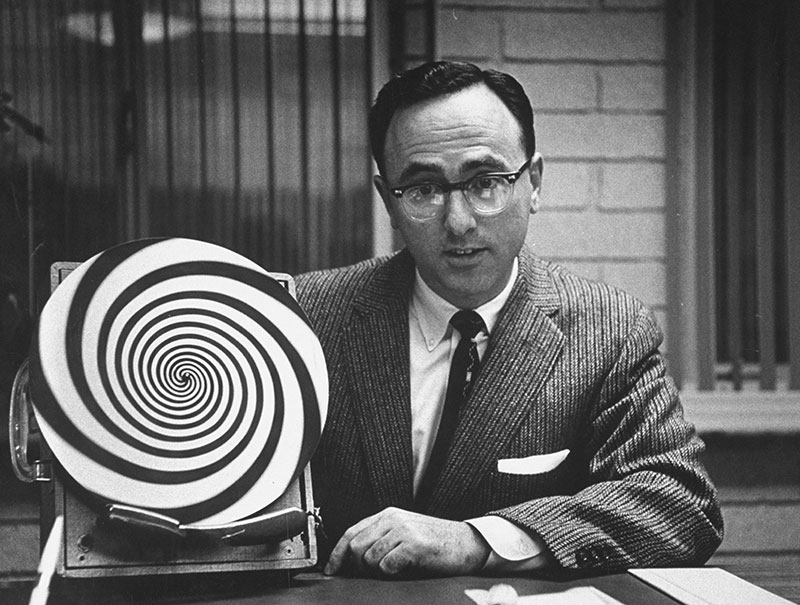
The first book i read on hypnosis was published by Melvin Powers. The second book i read on hypnosis was both written and published by Melvin Powers. The third, fourth, and fifth books i read on hypnosis were either published by or written and published by him. All of them were trade paperbacks, and their covers were often garish and unappealing to me -- but the contents were pure gold. Some of the books he published were facsimile reprints of public domain hypnotism classics from the early 20th century, to which he had added his characteristic "Foreword by Melvin Powers," which was always mentioned on the cover. The back covers or final pages of most of his books contained lists of other books on hypnotism, a field in which he was the absolute king -- but there was a streak of idiosyncrasy to his interests, for he also released long lists of titles on horses, bridge, poker, gambling systems, Judaica, dogs, metaphysics, calligraphy, business, tennis, astrology, jokes, mail order marketing, self-help, and cookery.
He invited people to come see him in his office or to telephone him and tell him of their reactions to his publications. He ran a lovely calligraphic note in the back of some titles that asked, "Did you enjoy reading this book? Why? Would you enjoy reading another similar book?" He even wrote, "If you have an idea for a book. I would welcome discussing it with you. If you already have one in progress, write or call me concerning possible publication," and he included his telephone number. He paid a straight 10% royalty, and his books were low in cost, so anyone could afford them.
If this sounds familiar to you, if it sounds a bit like my own Lucky Mojo publishing ventures, well, there is a reason for that. Melvin Powers was a person who helped anyone -- and i was one of the people he helped. He taught me many tricks of the trade, as he taught countless others, and he always maintained an upbeat, can-do attitude toward life. The last conversation i had with him was in 2013. I had been buying a particular group of titles from him for resale in my shop for years, but one book didn't arrive in my box, nor was i charged for it, so i phoned him up and asked if it was at press or had been discontinued. "Neither," he said. "I sold my last case out. I'm 91 years old. If I print another run, I won't be able to sell them before I die. It's a good book. I give it to you. You print the next edition."
Melvin Powers was born in 1922. He published his first book, "Hypnotism Revealed," in April 1947, one month before i was born. My entire childhood, adolescence, and adulthood was lived in the warm enfoldment of Power Publishing, The Powers Institute of Hypnotism, and the Wilshire Book Company. No one seems to have ever compiled a complete list of his output as a writer or publisher, and by narrowing my focus to only his books on hypnotism, i am scarcely doing him justice, for he was a fun-loving, high-energy polymath who enriched the world with his prodigious output of ideas. When he died, in 2013, i lost a mentor and a warm uncle-figure, someone who recognized my ambitions and encouraged them. He passed away the year after i launched my own low-cost line of trade paperback books. May his memory be as a blessing.
Powers was famous for three great innovations in hypnotism: The Hypnodisc, the Hand Hypnodisc (also known as the Hypno-Coin), and the Sleep-O-Matic Units.
Above you see Powers with a 12-inch Hypnodisc, recognizable by its five black spirals -- always five, no more and no less -- which is mounted on the flat surface of a standard portable 33 1/3 rpm turntable. The lid of the turntable has been removed and to the left is the handle of the carrying case. At bottom is the tone arm, locked in non-playing position. To operate the device, you place the hypno-disc on the turntable, tip it upright, turn it on, and let it run.
The Powers Hypnodisc turntable device can be seen on the cover of the 1950s reprint of Ed Wolff's 1939 book on hypnotism -- the edition for which Ed Mishell drew the cover illustration. The turntable Hypnodisc was so popular by that point that the reprint of Wolff's book contained an added half-page describing the Hypnodisc machine, without mentioning Melvin Powers' name. Powers sold the machines with their discs, which were printed on heavy chipboard stock, and he also sold the discs plain, to those who wanted to save money by adapting their own old phonograph turntables for use as hypnotic aids.
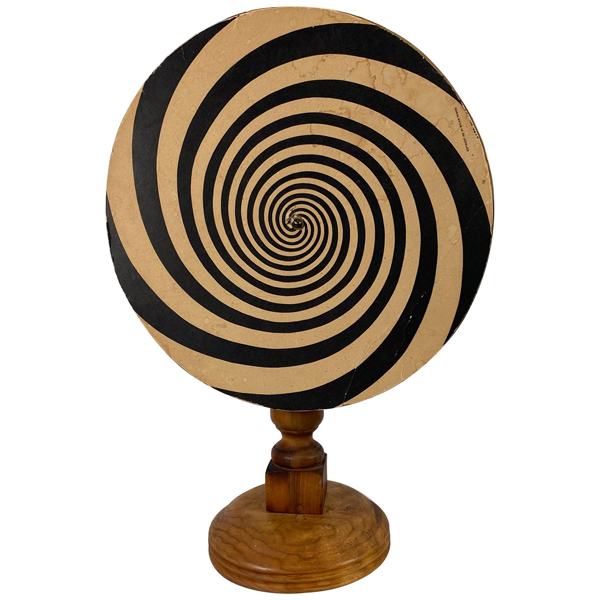
Here is the most sophisticated iteration of the Hypnodisc, dated 1951 on its copyright notice. The disc is now mounted on a small electric motor, which in turn is affixed to a lathe-turned wooden stand, probably adapted from a haberdasher's or milliner's hat-stand.
Powers also sold a smaller, hand-held version of his spiral pattern which was covered by a layer of lenticular plastic that caused it to appear to spin which you held it in the hand and rotated it back and forth. Instead of a five-armed spiral, this was six-armed. It was originally called the Hand Hypnodisc, but was eventually given the name Hypno-Coin, to distinguish it from the 12-inch Hypnodisc. U.S. Patent No. 2,815,310 was issued to Victor G. Anderson of Pictorial Productions, Inc., on March 1st, 1952, for a "Process of Assembling in the Art of changeable picture display devices" and covers general lenticular lens applications. Anderson, who patented numerous ocular devices, licensed the technology to Powers, who introduced the Hand Hypnodisc in the mid 1950s.
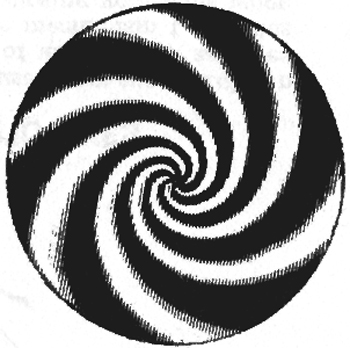
By 1968 a company called Vari-Vue, in Mount Vernon, New York, was producing the discs under Anderson's patent number and they were widely marketed in magazines, comic books, and newspapers as Hypno-Coins. Anderson's patent expired on December 3rd, 1972. Since then other companies have made them, but not always with the six-armed spiral developed by Powers and Anderson. For example, an undated Hypno Coin from Acme House Novelties uses a pattern with four whirling spirals and i have seen versions with as many as eight spiral arms.licensed
The Powers Sleep-O-Matic Units were machines that were programmed to play hypnotic sleep-suggestion audio-tapes and records in timed segments through the night. They were available in several forms. You could buy a full outfit, complete with a time clock and a pillow speaker, either in the form of a 33 1/3 rpm phonograph turntable, or as a 3 1/2 ips tape machine. Audio materials were available to play on both types of devices, and you could also buy the records and tapes separately for use on your own machines, with or without your own time clock and pillow speaker. At least three different audio programs were available.
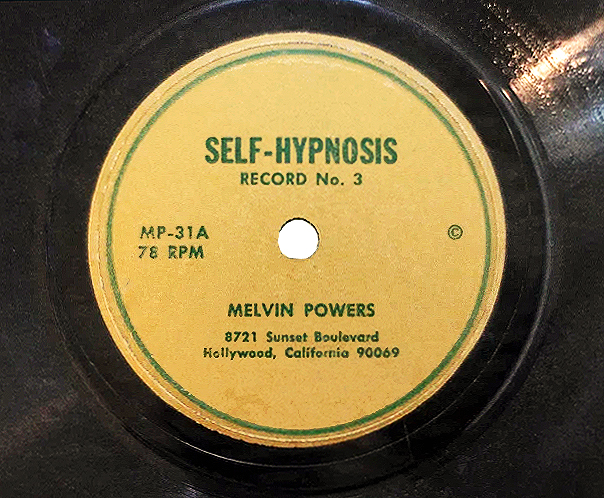
The Sleep-O-Matic Units, both records and tapes, were described and promoted in several of Melvin Powers' books. but nowhere more than in "Mental Power through Sleep Suggestion: A New Approach to Successful Living" also known as "Mental Power through Sleep Suggestion and Controlled Relaxation: Two Techniques of Reaching and Influencing the Subconscious," first published in 1952.
Why did Melvin Powers get into hypnotism? I have no idea. He had been selling self-help books out of his bedroom in his parents' house in Newark, New Jersey, since he was a teenager, and his folks assisted him in his business ventures. He moved to California in his early 20s and began a program of writing and publishing new books, signing good writers to publish, and publishing facsimile editions of classic books that had fallen into the public domain. His biggest sellers were "Think and Grow Rich" by Napoleon Hill, which he introduced to at least three generations of readers, and "Psycho-Cybernetics" by Maxwell Maltz, which came out in 1960 and blew my mind when i read it in jail in 1967.
Within this bibliography i have included various books on hypnosis that were published but not written by Powers but it gives me great pleasure to catalogue the Melvin Powers books which he himself wrote, and which i have treasured through the years.
For a list of the books that Powers had witten, published, or was offering for sale via mail-order in the 1960s, see this catalogue:
Melvin Powers Book List: Titles For Sale, 1960s
And now, onward in chronological order -- the works of Melvin Powers:
|
Powers, Melvin. Hypnotism Revealed: The Powers Course in Hypnotism and Self-Hypnosis. Location Unknown, Publisher Unknown, First Printing, April, 1947. (I have never seen it) Location Unknown, Publisher Unknown, Second Printing, revised, November, 1947. (I have never seen it) Location Unknown, Publisher Unknown, Third Printing, revised, June, 1948. (I have never seen it) Los Angeles, Savage and Savage, Publishers, Fourth Printing, revised, December, 1948. 96 pages. Trade paperback, stiff index stock cover. Powers, Melvin. Hypnotism Revealed: A Complete Practical Course in Hypnotism and Self-Hypnosis. Los Angeles, Powers Institute of Hypnotism, 1948. 104 pages. Trade paperback, leatherette cover. Powers, Melvin. Hypnotism Revealed: A Complete Practical Course in Hypnotism and Self-Hypnosis. Los Angeles, Powers Institute of Hypnotism, 1967. 104 pages. Trade paperback, photographic cover, with 9 interior photo illustrations. The difference in page count between these editions is primarily one of typesetting. I have both the fourth printing from Savage and Savage and the presumed fifth printing from the Powers Institute. Both of my treasured copies bear inscriptions in Melvin Powers' pre-calligraphic handwriting, "December 29, 1948, To Uncle Sol, from his nephew, Melvin" and "To Uncle Sol, from His Boy, Melvin." Also shown here is the cover of the 1967 edition, with one of Powers' infamous "Trilby and Svengali" covers. The photo is a composite of a man's hand holding a small, marble-sized crystal ball, and the hypnotized female model.
The content is divided into a Foreword and 10 lessons:
The writing is lively and presented with an authority unusual in such a young author -- Powers was only 25 years old in 1947, and by 1948 he had declared himself to be the "Director" of the "Powers Institute." In the Foreword Powers explains why hypnotism, once popular in the late 19th and early 20th centuries, has undergone a sudden, dramatic resurgence: "The successful utilization of hypnosis in the treatment of war neuroses has aroused considerable interest in hypnotism by the laity. Hypnotism received widespread recognition in World War II because it provided a means of brief and effective psychiatric treatment of mental disorders caused by traumatic war experiences." He was right: the employment of hypnotherapy to help ex-military personnel became the foundation of modern clinical hypnotism, and with the Korean War and Vietnam War following so closely upon the heels of the Second World War, there were tens of thousands of veterans in need of help. The tenth chapter of this book, consisting of newspaper accounts of Hypnotism in anesthesia and mental health treatment, is both the most dated part of the text and also the most fascinating from a historical perspective. It shows us the glowing possibilities that Powers saw for hypnotherapy, self-hypnotism, and self-help by means of hypnotic auto-suggestion. |
|
||||||||
|
Powers, Melvin. Mental Power through Sleep Suggestion: A New Approach to Successful Living (cover title). Mental Power through Sleep Suggestion and Controlled Relaxation: Two Techniques of Reaching and Influencing the Subconscious (title page). Wilshire Book Company, Los Angeles. [Second Edition], 1952 with stiff red index stock cover. Wilshire Book Company, Los Angeles. [unknown edition], 1978, with glossy photographic cover. 110 pages. Trade paperback. My copy of the red-covered edition of this book is noted as the second edition and is dated to 1952; i have never seen a first edition. The later edition with the blue photographic cover is not in my collection, but i have seen copies for sale online dated as late as 1978. I suspect the new cover actually came into play during the mid 1950s because it features one of Powers' signature "Trilby" covers -- the zoned-out female model who appeared both on the cover and within so many of his books -- and the image is taken from a photo-shoot that dates to 1953 and appeared in Powers' first illustrated book, "Advanced Techniques of Hypnosis." Both covers feature a Sleep-O-Matic Unit with time clock and pillow speaker -- a line drawing on the second edition and a photo on the later edition. I'm sure if any of these are found in working order, complete with their audio tapes or records, they will fetch a pretty price at auction.
Chapters include:
It could be argued that "Mental Power" (compare the title with his name, Melvin Powers!) is not a book about hypnotism at all -- but it is, even though Powers himself tagged it as a book on "Self-Help." By carefully avoiding any mention of self-hypnosis, and recasting his program as "Sleep Suggestion and Controlled Relaxation," Powers touched an entirely new demographic -- the person who does not want to give over self-control to an operator, mesmerist, or Svengali, but who does want a shortcut to improvement in memorization, self-confidence, success, and poise. In this book Powers acknowledges and builds upon the 19th century work of the French psychologist Emile Coue (1857 - 1926), whose "Coue Method" of auto-suggestion consisted of self-hypnosis through a series of coordinated vocal, gestural, and postural exercises to center the self within the body, and to pay attention to the body with the intention of improving comfort, reducing pain, and increasing energy. As a form of psychotherapeutic self-improvement, the Coue Method took the world by storm, and although it was later mocked for its simplicity, it still has many practitioners (myself included) and is a valuable technique for developing self-awareness and self-confidence, as well as providing an excellent form of management in cases of chronic pain. The fact that Powers brought Coue into the modern era amazed me, for i knew Coue's techniques through my mother's and great-aunt's demonstrations of how the work was done -- and here came Melvin Powers with phonograph recordings and tape recordings: Coue for modern times! I will admit that i never bought one of Melvin Powers' Sleep-O-Matic Units -- they were a bit too pricey for a young girl like me. Instead, i kind of imagined what they would be like, with their automatic timers and pillow-speakers and softly droning voices and hypnotic rain on the roof. And i fell asleep mumbling my Coue Method mantras, and did very well.
|
|||||||||
|
Powers, Melvin. Advanced Techniques of Hypnosis. Los Angeles, Melvin Powers, 1953. Wilshire Book Company, Los Angeles; many other editions, including 1965 and 1971. 128 pages. Paperback, illustrated with photos. Publisher's blurb: "This new hypnotic book is dedicated to those who aspire to a fuller understanding of hypnotic procedures. A careful reading of the book will not only be rewarding because of the wealth of information contained in it, but will also assure the reader maximum efficiency in the exciting and fascinating practice of advanced hypnosis."
Chapters include:
This may be my least-favourite of Powers' books. The idea is to teach professionals a few more techniques, but there are better (and thicker) books by other authors that provide multiple methods of induction and scripts or patter to use when hypnotizing someone. The "Triple Trilby with Pocket-Watch and Hypnodisc" cover has got to be considered a classic, however, and inside there are seven more murky pages of black and white photos of our professional model alone and with her clean-cut Svengali. At least one of these photos was used as the basis for two other book covers -- namely the later edition of "Mental Power" by Melvin Powers and the first Wilshire Book Company edition of "Hypnotism Made Practical" by J. Louis Orton. |
|||||||||
|
Powers, Melvin. Self-Hypnosis: Its Theory, Technique, and Application. Wilshire Book Company, Los Angeles. 1956; also a "Second Edition, undated. 145 pages. Trade paperback. This book is highly influenced by the clinical psychology of its time. In my opinion, Powers was not at his best when he was quoting eminent scientists, psychiatrists, and psychologists. For one thing, the understanding of psychology, once so influenced by talk therapy and the Freudian, Jungian, Adlerian, and Rogerian perspectives, has moved on into a purer understanding of neuroscience, leaving old premises about the subconscious in the dust. The interesting thing is that despite the current neurological, hormonal, genetic, and epigenetic theories on what constitutes the mind, the brain, and consciousness, the same old techniques of hypnosis still work.
The contents include:
Written stiffly and formally, the theme of "Theory, Technique, and Application" is too academic to be helpful to a person who is simply interested in self-hypnosis, and more than half of the chapters deal with psychoanalytic theories and concepts like "Subconscious Motivation," which grow out of the adversarial Freudian-style approach to clinical patients. The content ranges too widely over the subject to come to any conclusions about how to benefit by the practice of self-hypnosis. From Emile Coue to the power of prayer, and from non-directive therapy to psychodrama, it is more or less a catalogue of theories of the mind that were in play during the first half of the 20th century. Powers displays his erudition here, but self-hypnosis, his ostensible topic, is lost under the accumulated weight of so many competing theoreticians and practitioners.
|
|||||||||
|
Powers, Melvin. A Practical Guide to Self-Hypnosis. Wilshire Book Company, Los Angeles. 1961 and several subsequent editions. 129 pages, plus 12 pages of ads. Trade paperback. Powers Melvyn [sic] Self-Hypnosis: A Practical Guide to Self-Hypnosis Various pirate editions, from a variety of fly-by-night publishers. This book is Melvin Powers as i first encountered him, bubbling over with eccentricity, ready to engage the reader on any interest-level, and filled with practical answers to frequently-asked questions. I love this book on self-hypnosis and i learned a lot from it. I recommend it highly to anyone who has an interest in self-hypnosis as a sub-topic of hypnotism.
The contents include:
Also interesting, it is at this point, in 1961, that Powers unveiled a complete mail-order shop
devoted to hypnotism. The twelve pages of ads in the back of the book
present a wonderful array of products:
The first edition of "A Practical Guide to Self-Hypnosis" has a colourful, charming, modernistic cover made by photographing a spinning collage of deckle-edged Classic Laid paper samples, with a brown ink semi-portrait of Melvin Powers in the center. I love this cover! It is so arty! In 1961 i too was collaging paper samples to make one-of-a-kind art posters. I too had discovered the magic of Osmiroid pens and Pelikan brown ink. Ah, those were the days. The second edition of "A Practical Guide to Self-Hypnosis" has a cover that is sparse, spare, uninviting and, alas, printed in a shade of cold yellow on white that invariably fades into illegibility upon exposure to sunlight. Bah. "A Practical Guide to Self-Hypnosis" also exists in a bizarre zombioid form that came into being after Powers' death. Sold as "Self-Hypnosis: A Practical Guide to Self-Hypnosis" it stupidly conflates the titles of two of his books, but only contains the contents of the latter. It is a pirate edition, with the name Melvin spelled incorrectly -- as "Melvyn" -- and is for sale online in both print-on-demand and digital formats from a variety of fly-by-night publishers. The cover is a photo of a hand holding a pocket watch. |
|
||||||||
== Q ==
== R ==
== S ==
|
Sage, Xenophon Lamotte [Ewing Virgil Neal]. Hypnotism As It Is: A Book for Everybody. New York State Publishing Co., Rochester, NY, 1897, 1st ed. 116 pages Binding. Pictorial cover, illustrated with many photos. 6th ed. "150,000th thousand printed," 1901, hardcover, royal blue pebbled cloth, gilt spine title. X. Lamotte Sage, Ph.D, L.L.D., "formerly Professor in Pierce College, Philadelphia Pa., and Professor in Central College, Sedalia, Mo." padded his credentials a bit. His writing is clear and precise, and this slender book covers the topic of hypnotism thoroughly, but Mr. Sage was not a Ph.D. In a later book he titled himself an A.M. and LL.D., but all i can say with certainty is that he was a man of several parts. He stated truthfully that he had hypnotized thousands of people, but his ten year career as a stage magician was only the second phase of a long life in the public eye that began as a professor of banking and bookkeeping at a small business college, led through hypnotism to selling questionable patent medicines in Europe, and on to wealth on a grand scale as a manufacturer of cosmetics and perfumes. Along the way he had three wives and a son, and embraced the cause of Fascism in pre-World War Two Europe. His real name was Ewing Virgil Neal.
In this book, as Xenophon Lamotte Sage, Neal's take on hypnosis is primarily neurological, psychological, and medical; he wants to discuss hypnosis in relation to, and in contrast with, other mental states, including sleep, delusion, self-awareness, amnesia, and the like. He presents avenues of experimentation which he believes will prove hypnotism's medical efficacy, particularly in treating nervous disorders or the aftermath of mental shocks, as well as in the operating room, as a substitute for, or an adjunct to, conventional anesthesiology. Throughout it all, Sage presents a moderated, fact-based, rationalist's case for hypnotism. It's a brief read, but i recommend it highly, because the author seeks to place the study of hypnotism and post-hypnotic suggestibility among the sciences rather than treat it as a mere entertainment or relegate it to the spheres of spiritism or paranormality. This book is long out of copyright and may be found online in digitized form as well as from print-on-demand publishers. For all the boasts that there had been 150,000 copies printed within four years of its original release, it remains an uncommon volume, although not a terribly expensive one in the antiquarian book trade. The photographs, which demonstrate various methods of placing subjects in a trance, are very good and may make collecting an original edition worthwhile to the serious student, because reprints generally lose a lot of clarity when an attempt is made to copy old half-toned photographs. My favourite photo in this book is the first one in chapter one, titled "Ada St. Clair singing 'Ben Bolt' while hypnotized by Dr. Flint"! My God, what an evocative image and caption that is -- and so, so, so 1897! In fact, this captioned photo opens so many rabbit holes that i can only direct you to watch for an upcoming page that i call, "Oh, Don't You Remember Svengali, Ben Bolt?" |
|||||||||
|
Sextus, Carl. Hypnotism: Its Facts and Theories and Related Phenomena, With Explanatory Anecdotes, Descriptions, and Reminiscences Publisher Unknown, c. 1893 [date is from the Foreword; i have never seen a first edition]. 278 pages, heavily illustrated; presumed to have been issued in hardcover. Reprinted in facsimile as Hypnotism: A Correct Guide to the Science and How Subjects Are Influenced With a Foreword by Melvin Powers Wilshire Book Company, Hollywood, California, 1957, 1968 278 pages, heavily illustrated; trade paperback. • Foreword • I. Puysegurian Somnambulism • II. Hypnotism as a Remedy • III. Hypnotism, Also Called Mesmerism • IV. Hypnotic Methods and Conditions • V. Hypnotism Defended • VI. Hypnotic Clairvoyance • VII. Crystal Visions • VIII. Magnets and Od • IX. Hypnotism and Animals • X. Hypnotic Miscellanies • XI. Natural Somnambulism or Sleep-Walking • XII. Introduction of Hypnotism in Chicago I can definitely see why Melvin Powers chose to reprint this rare old book: it is illustrated with dozens and dozens of charming late Victorian pen-and-ink illustrations, the material is unique to this author, and it was in the public domain, with no royalties to pay. He must have had good sales with it, for i have found two paperback printings, one from 1957 and the other from 1968 -- and there may have been more, as Powers made a practice of keeping every book he ever published in print. On the other hand, this is a strange mish-mash of a text. It begins smoothly enough, with the standard recapitulations of French experiments in hypnotism, and their results. It defends hypnotism against charges of danger, and preaches the avoidance of misuse. But then, with Chapter VI, a mere 86 pages into the book, the author commences writing what seems to be a very different work indeed. He begins with accounts of crystal gazing and magic mirrors, gives a nod to the priests of ancient Egypt and the fakirs of India, with their elephants and their trances, and then swan-dives into seances, experiments in clairvoyance, and the use of lodestones and steel magnets by Jewish rabbis and the sorcerers of Arabia, Palestine, and China. The tone changes too -- what began as a review of previous literature becomes a wild travelogue, filled with fascinatingly exotic anecdotes. With Chapter IX. on page 125, we return again to Hypnotism -- this time on animals -- but the exoticism continues, and now we read tales of Native American snake-charmers and the Texas cowboy, Frank Kerr, who entrances copperheads and rattlesnakes by playing on his flute. Then follows a chapter on "Miscellanies," and a chapter on somnambulism, told through anecdotes written in the style of a dime novel. The last chapter concerns the author's own life, attending Spiritualist seances and hypnotizing an assortment of Theosophists and prominent businessmen in Chicago during the era of the World's Columbian Exposition in 1893. It's a wild ride, and a great advertisement for the stage performances and private consultations of Mr. Sextus.
|
|||||||||
|
Shipley, Maynard. Hypnotism Made Plain Haldeman-Julis Company, Girard, Kansas, 1934. 64 pages, paper wraps. No 92 in The Little Blue Book series • Introduction • 1. A Retrospect • 2. Modern Hypnotic Methods • 3. Phenomena of Hypnotism • 4. Hypnotism and Psycho-Analysis • 5. Suggestion and the Masses • 6. Hypnotism and Personality This is No. 92 of more than 2,000 miniature, paper-wrapped, saddle-stitched Little Blue Books published from 1919 through 1978 by Emanuel Haldeman-Julius and his wife, Marcet. At a mere 64 pages in length, it is little more than an introduction to the subject. Like the similar People's Book No. 18 by Dr. Alice Hutchison, this book begins with the obligatory history of hypnotism from Mesmer and Braid to Liébault and Coué, and then posits a scientific, rather than a mystical, basis for its operation, while making a call-out to Christian Science and the New Thought Movement. During the second part of the book, Shipley sails off into a discussion of Sigmund Freud, states that all mental approaches to healing are essentially faith healing, and then takes a sharp turn to the left to describe the dangers of mass hypnosis by orators and the press, from the Crusades of the Middle Ages through William Jennings Bryan and Billy Sunday. Given the date of publication, just as the Volkishe Movement had given rise to the Nazi Party and Adolf Hitler was about to turn Europe into a charnel house, i would say that Maynard Shipley was prescient. He shouted out a warning about the looming disaster of a magnetic leader who could hypnotize the masses that, alas, fell on deaf ears. I bet that by the time "The Manchurian Candidate" came around, he was muttering, "I told you so."
|
|||||||||
== T ==
== U ==
== V ==
|
Van Pelt, S.J.. Modern Hypnotism: Key to the Mind. Associated Booksellers, Westport, CT, 1956 90 pages, illustrated. Paperback. Dr. S. J. van Pelt was the president of the British Society of Medical Hypnotists, a member of the British Medical Association, a member of the Society for Clinical and Exceptional Hypnosis of New York, a member of the Society for the Study of Addiction to Alcohol and Other Drugs, a member of the National Association for Mental Health, and the editor of "The British Journal of Medical Hypnotism." From 1949 to 1956, when this book was published, he wrote and contributed to nine other books on the therapeutic and psychological uses of hypnotism, which i shall review if and when i find copies. Van Pelt's interests are in the use of hypnotism to assist patients to overcome addictions to alcohol and tobacco and to cure Freudian-style "neuroses," such as stammering, blushing, eating disorders ("obsessional neurosis"), male impotence, and female fear of sexual contact ("frigidity"). I cannot say that i like his anecdotal, breezy style of writing ("The Case of the Hero who was a Coward," "The Case of the Boy who thought he was a Girl"). Every story reeks of Freudian analysis and in many the mother is to blame for the patient's physical and mental ills. Worse, and most improbably, every chapter ends with the patient cured and "all smiles" after three to six hypnotic sessions. On the whole, i did not like this book nor did i find it of value. It may be someone else's cup of painless dentistry, but i found it useless and anti-inspirational. If medical hypnosis is your interest, try "Hypnosis in Medicine" by Dr. Philip Magonet instead. |
|||||||||
|
Verner, Alexander. Medical Hypnotism and Suggestion. N.P., N.D. "Printed in U.S.A." Circa 1904, 56 pages (37 pages of text and 19 pages of ads for other metaphysical books); illustrated. Stapled wraps. Illustrations include a pen-and-ink drawing of a bare-chested man being examined by a doctor with a stethoscope, signed I. Q. Manool [?], 1904, plus six line-art sketches of the various forms of trance induction and the results, including rendering a man impervious to pain and testing the depth of his trance by sticking needles in his arm. Verner was the self-proclaimed founder of the British Psychological Institute and the author of five early 20th century metaphysical booklets: "Medical Hypnotism and Suggestion," "Table Rapping and Automatic Writing," "Practical Psychometry," "How to Know Your Future," and "How to Converse With Spirit Friends." These little gems were kept in print well into the 1950s, with varying colours of paper being used for the wrappers. The ads that ran in the back contain no publisher's address. (My copy was owned by the stage magician Jeron Criswell King (1907 – 1982), who was known as the Amazing Criswell.) All of the books advertised on the 199 pages of ads within this pamphlet, except for those by Verner, were written by William Walker Atkinson, either under his own name or under his pseudonyms Theron Q. Dumont, Swami Panchadasi, Swami Bhakta Vishita, and Swami Bramha. As always when i run into a book filled with ads for Atkinson publications, i have some doubts as to the actual existence of the stated author. Who was Alexander Verner, F.A.I.P.? What does F.A.I.P. stand for? In "Practical Psychometry," he mentions the existence of his wife, the psychometrist "Mrs. Verner." I have found no footprint for the British Psychological Institute, although the "British Psychological Society" was founded in 1901 and still does exist. According to one seller, this booklet is an offprint of "Health, Wealth and Happiness or Human Psychology," an 1892 hardcover book by Verner that included chapters titled Success and Happiness; Medical Hypnotism and Suggestion; Practical Psychometry; How to Know Your Future; Table Rapping and Automatic Writing; and How to Converse with Spirit Friends. I have my doubts, due to interior evidence of 1904 in "Practical Hypnotism" and 1902 in "Practical Psychometry." And the 1892 Verner title is not to be confused with the similarly titled and dated "Health, Wealth and Happiness: How to Attain and Retain Each to the End of Life" by Edward S. Ellis, A.M., published in 1892 in Philadelphia, the original home of ... William Walker Atkinson.
|
|||||||||
== W ==
|
Winn, Ralph B., PhD. Scientific Hypnotism: An Introductory Survey of Theory and Practice. Christopher Publishing House, Boston, 1939 168 pages. Hardcover, Octavo. Thorson Publishers Limited, London. 2nd Edition, 1956 "Hypnotism Made Easy: An Introductory Survey of Theory and Practice" "Second Edition" is the title on the cover and title page, but internally it is a facsimile of the 1939 edition, with the running head "Scientific Hypnotism" throughout. It also has Winn's surname misspelled as "Wynn" on the front cover, but correctly, as "Winn" on the interior title page. Foreword by Melvin Powers. Wilshire Book Co., Los Angeles, 1956, and more, through 1974, 1976, 1978 168 pages, plus ads. Paperback. Also reprinted as "Hypnotism Made Easy: An Introductory Survey of Theory and Practice" in a kindle edition, 2012. Publisher's blurb: "The subject of hypnosis needed to be taken off of the vaudeville stage, out of the laboratory, and into the minds of thoughtful persons everywhere. Its merits are solid and various. It begins by showing that the phenomena of hypnotism are not mystical but natural. As such, they are susceptible to scientific analysis as well as control. The author then arouses our interest by proceeding to give one of the best descriptions of hypnotic wonders in the literature of hypnosis. These, he shows, are closely connected with hysteria, and with the still better known effects of suggestion and emotion. His running account of all these effects makes the reader feel he owes it to himself to grasp the situation." "Dr. Ralph B. Winn, a professor of psychology, and an American expatriate living in Paris, was the author of over twenty volumes on topics such as aesthetics, German art, philosophy, astronomy, child development, child rearing, collectivism, communist aesthetics, education, existentialism, Abraham Lincoln, mental health, mental suggestion, hypnotism, psychiatry, psychology, and psychotherapy. He developed a form of light hypnosis (oneirosis), which he used to eradicate objectionable physical habits and personality faults. He was a member of the Existentialist philosophical movement." As for Winn's name being misspelled "Wynn" by Melvin Powers, the same thing happened to Powers when, after his death, HIS name was misspelled "Melvyn" on the cover of a reprint of his "A Practical Guide to Self-Hypnosis." Cosmic justice or cosmic joke? You decide! |
|||||||||
|
Wolff, Ed [Edwin D. Wolff]. Practical Hypnotism. Max Holden, New York City, NY., 1936; Hardcover, green cloth with tipped-on paper title. Louis Tannen / Tannen's Magic, New York City, NY., 1937, etc.; illustrated white wraps; cover art and lettering signed "Ed Mishell." D. Robbins, Brooklyn, NY., 1951; stated "3rd printing;" plain cyan cover, no cover art. Max Holden, New York City, NY., 1951, stated "4th printing;" plain cyan cover, no cover art. D. Robbins, Brooklyn, NY. 1976 - 2003; illustrated wraps; cover art signed "Ed Mishell" -- at first with his lettering, but by 2003, the hand-lettering had been replaced by a jagged Letraset font and the original Ben Day screen was overlaid by a Letraset fake Ben Day screen. 34 pages. Hardcover green cloth; Paper wraps on white or light blue stock, with or without Ed Michell art and lettering, depending on the publisher and the edition. Edwin D. "Ed" Wolff (1881 - 1962) was born in San Antonio, Texas. He married and settled down to run an advertising agency, Wolff Associates, in Rochester, New York. In 1929, at the age of 48, he began performing stage magic. He released "Practical Hypnotism" in 1936 and stated in the book that his address was 19 Vassar Street in Rochester. He died at the age of 81 in Long Beach, California. "Practical Hypnotism" covers the methods used by stage magicians to select good trance subjecs from among the members of a theater audience, and to give them suggestions for physical actions that will provide harmless amusement to those who view the show. One of its interesting points is the cover, which shows an early version of an electrical, spinning spiral disc -- sometimes called a hypno-disc -- of the kind made famous during the 1950s by the hypnotist Melvin Powers. Publisher's blurb: "This complete mini-course in hypnotism starts with the assumption that the reader knows nothing about the subject at all and then rapidly leads him, step by step, to the point where he can hypnotize perfect strangers. It is succinct, no nonsense and unpadded. Its slim 33 pages are jammed with the essential information one needs to become successful in the art of hypnotism. In the first section, comprised of eight lessons, Mr. Wolff stresses strongly that you achieve the goals in each chapter before increasing your skills. In these chapters he teaches many “tests” and various ways to hypnotize. In the second part of the book post-hypnotic suggestion and the legal use of hypnotism by doctors and dentists is discussed. The book ends with an introductory lecture to staging an act and gives suggestions as to what tests and demonstrations to use." This 34 page booklet is not to be confused with the identically-titled 96 page book "Practical Hypnotism" by Edward Henry Eldridge. Ed Mishell (1896-1983) who drew the cover image and provided lovely art deco lettering for the later paper-bpund editions, was a lawyer, writer, illustrator, and magician from New Jersey who illustrated magic catalogues and booklets for Louis Tannen. The Max Holden first edition hardcover contains no mention of the hypno-disc shown on Mishells Svengali-and-Trilby style cover, but text describing it was added after the Mishell cover was put into play. In the first edition, all of the illustrations are placed on one page, and consist of photos of Wolff and amateurish cartoons, probably by Wolff himself. The later D. Robbins editions are re-typeset, with the photos eliminated, the cartoon illustrations distributed throughout the text, and Ed Mishell's cover lettering replaced by a 1970s Letraset font. Wolff's little course has been kept in print in small runs by various magic shops for decades and is also available in digital form via the online stage magic community.
|
|||||||||
== X ==
== Y ==
|
Young, L. E. [Mrs. Lou Ella Young]. The Science of Hypnotism - The Wonder of the 20th Century - All Known Methods Explained - The Way to Become an Expert Operator Diamond Publishing Co., Palmyra, PA., 1899. 1st hardcover edition. 12mo. Pictorial binding 320pp. Occult Science Association, New York, NY, 1899. Illustrated red paper wraps, 252 pages. Educator Press, New York, New York, U.S.A., 1899 Paperback. Franklin Publishing Company, Chicago, 1930. 2nd printing.. Hardcover. 8vo, green cloth. Franklin Publishing Company, Chicago, 1931 Third printing. Hardcover, 8vo, red cloth Revised Edition by Young & Dr. Leon H. Zeller, Ph.D. I. & M. Ottenheimer, Baltimore, 1947 Revised Edition. Red Cloth -- also Paperback I. & M. Ottenheimer, Baltimore, 1948 Revised Edition. Yan Cloth Also Blue cloth boards, black titles. Revised Edition by Young and Melvin Powers I. & M. Ottenheimer, Baltimore, 1953. Hardcover with Dust Jacket One of the best-distributed American books on hypnotism, Mrs. Young's magnum opus was published in a variety of bindings, both hardcover and paperback, with page counts that varied from 247 or 252 pages up to 320 pages. The title varied a bit over time as well. Because it is now a relatively rare book and highly desired in any form, i have been unable to collect and compare the variants, and my reports are based on the two copies i have and on many seller listings in the antiquarian book trade. Readers on a budget may be glad to know that this book is available from several print-on-demand publishers and is also online for free in digitized form. So what is so special about "The Science of Hypnotism - The Wonder of the 20th Century"? Well, for starters, there are eight historical chapters on the varied European schools of hypnotism, from Braid through the Nancy School and Dr. Liebault to Charcot at La Salpetriere, Dr. Burq, Dr. Luys at the School of the Hospital de la Charite, Gurney, Lord Tucky, Ralph Vinvent Donayo, Dr. Bremaud, Abbot Faria, Carl Sextus, Professor Berheim, Professor Gregory, Dr. Moll, and more. There is also an excellent bibliography of all of the original 19th century works on hypnotism, both in English and in French, from which the author drew information for summarization here. Young laid it all out, saving the reader the trouble of having to learn French. And make no mistake -- this is the book that Walter B. Gibson consulted when he wrote his book, "Hypnotism Through the Ages." After the history and medical opinions, Young gets right into the many methods of hypnotic induction taught by the eminent worthies of yore, and this is what earns this 1899 book the forward-looking subtitle, "The Wonder of the 20th Century." Young knew that hypnotism was crashing upon America's shores like a tidal wave, and provided the life raft that was needed for newcomers to the practice to stay afloat amidst the many competing theories and methods. And Young covers them all, from scientific and medical hypnosis to psychological and psychiatric hypnosis, and, yes, thought transference, mental telepathy, suggestion, and auto-suggestion. This was an admirable book when it was published, and it remains an admirable, and surprisingly readable, book to this day, more than 120 years after it was first released. It also gave rise to our next entry, which long ago outpaced it in sales. |
|||||||||
|
Young, L. E. [Mrs. Lou Ella Young]. 25 Lessons In Hypnotism: How to Become an Expert Operator M. Young, 1899. 36 pages. red paper wraps. Franklin Publishing Co. / Padell Book Co., New York, 1935. 64 pages. Saddle-stitched, pale yellow paper wraps. (58 pages of of original text, 6 pages of new text by an uncredited writer.) Johnson-Smith and Company, Detroit, undated, circa 1938. 64 pages (32 pages plus 32 page of ads for novelty goods and booklets). Square-bound, grey paper wraps Top Hat Magic Company, Evanston, Illinois, undated, circa 1950 - 1960. 36 pages. side-stitched pamphlet. This popular pamphlet has a complex history. It was not designed as a stand-alone booklet, but rather as a handy pocket-size adjunct to Mrs. Lou Ella Young's comprehensive 252 page book, "The Science of Hypnotism," also published in 1899. She and "M. Young," whose photographic portrait appears in the larger book, were among among the first American authors to translate and summarize the extensive corpus of 19th century European publications on mesmerism and hypnosis. This booklet, by removing most of the history and theory contained in "The Science of Hypnotism," was aimed at the popular occult, metaphysical, scientific, spiritual, and entertainment communities, and in this objective it succeeds admirably, its printing history long outlasting that of the book upon which it was based. There have been at least half a dozen editions of "25 Lessons in Hypnotism" issued by as many publishers in the past 120-plus years. The editorial text revisions, variant typesetting, and changes in cover art (or lack thereof) show that many hands have touched this work since its copyright was not renewed and it entered the public domain, circa 1928. As far as i know, it has never been out of print, and it well deserves that status, for it is a true classic. On the original 1899 edition with the red wraps, the title given on the cover is "25 Lessons In Hypnotism: How to Become an Expert Operator," and a longer subtitle on the title page identifies the booklet as "25 Lessons in Hypnotism, Being the Most Perfect, Complete, Easily Learned and Comprehensive COURSE in the World, Embracing the Science of Magnetic Healing, Telepathy, Mind Reading, Clairvoyant Hypnosis, Mesmerism, Animal Magnetism, Thought Transference, Personal Magnetism and Kindred Sciences." The running head on each page is "Young's Lessons in Hypnotism." The cover art is a cropped version of Figure 6 from "The Science of Hypnotism," showing group-hypnosis in a stage context; in order to fit the narrower designated space here, the woman at the far right of the group has been removed. This booklet was not typeset to match "The Science of Hypnotism," but seems to have been handled by a job-printer who had some wonderful old 19th century fonts on hand. There are textual references not only to "The Science of Hypnotism," but even to page numbers within the bigger book for the reader to consult. These are removed in subsequent editions. The pale yellow cover shown here is from the most popular variant of the booklet, and this example depicts the first printing of this edition, from Franklin Publishing / Padell Book Co., of New York in 1935. The uncredited cover artist utilizs the stereotypical Svengali-and-Trilby image of a man hypnotizing a woman, which became quite popular on cheap hypnotism books during the first half of the 20th century. The text has been newly typeset and amended to remove references to page numbers in "The Science of Hypnotism," although the book itself is still mentioned. There are several interior illustrations in pen-and-ink line art with a grey Ben-Day screen. Young's lessons themselves run only through page 58, and the additional six pages form a new chapter by an uncredited writer, titled "Putting Hypnotism to Use." This is filled with newspaper clippings that give accounts of hypnotism in America and Europe. One of them mentions "J. Louis Orton of Uxbridge, England," the author of "Hypnotism Made Practical," who had recently broken some kind of world record by hypnotizing a woman while they were in an airplane flying at 2,000 feet. This version of "25 Lessons" was widely reprinted in the 1970s with a cover of bright yellow card-stock, and had a considerable revival at that time. The Johnson-Smith edition with the greyish cover transposes the title page subtitle to the cover, so the booklet is retitled as "25 Lessons in Hypnotism, Magnetic Healing & Personal Magnetism, Being the Most Perfect ..." It has been retypeset, and the font is so small, in order to fit it into 32 pages and leave room for 32 pages of ads, that it is almost unreadable. Not only that, but the type is placed in erratic blocks, more or less at the rate of one lesson per page, not completely filling the pages. The cover illustration, uncredited, is yet another stereotypical Svengali-and-Trilby image. The editing to remove the page number references to "The Science of Hypnotism" differs from the editing done in the Franklin Publishing / Padell Book Co. version. This edition was printed in 1938, as can be determined from the popular "new" dance fads mentioned in an ad for a book on dancing, and corroborated by the cryptic notation "387" -- July, 1938 -- on the back cover. Last in my collection is the edition from Top Hat Magic Company in Evanston, Illinois, undated but from the 1950s, because the address lacks a zip code. Top Hat Magic was operated by Robert M. (Bob) Tracey, and sold magic tricks and novelties via mail order from the 1950s through the 1970s. This edition is an exact facsimile of the original 1899 edition, but because the original cover was printed in black-on-red, which could not be separated with the panchromatic film of the era, Tracey slapped on a plain white glossy typeset Kromekote cover rather than pay for cover art. In other words, in every way except for the cover, this version is identical to the 1899 edition. Like the original, it is titled, on the cover, "25 Lessons in Hypnotism: How to Become an Expert Operator." "25 Lessons in Hypnotism" has remained in print for well more than a century because it is so succinct and easy to understand. Lou Ella Young did an admirable job of presenting clear instructions in hypnotism in a wide variety of social and clinical contexts, which she believed should be employed as "an educational agent, a curative agent, or a means by which the supernormal powers of the human mind may be studied to the best advantage." Small though it is, this is a must-have booklet for every hypnotist's library.
|
|||||||||
== Z ==
ACKNOWLEDGEMENTS
Thanks to nagasiva yronwode for above-and-beyond scanning and organizational help.
